


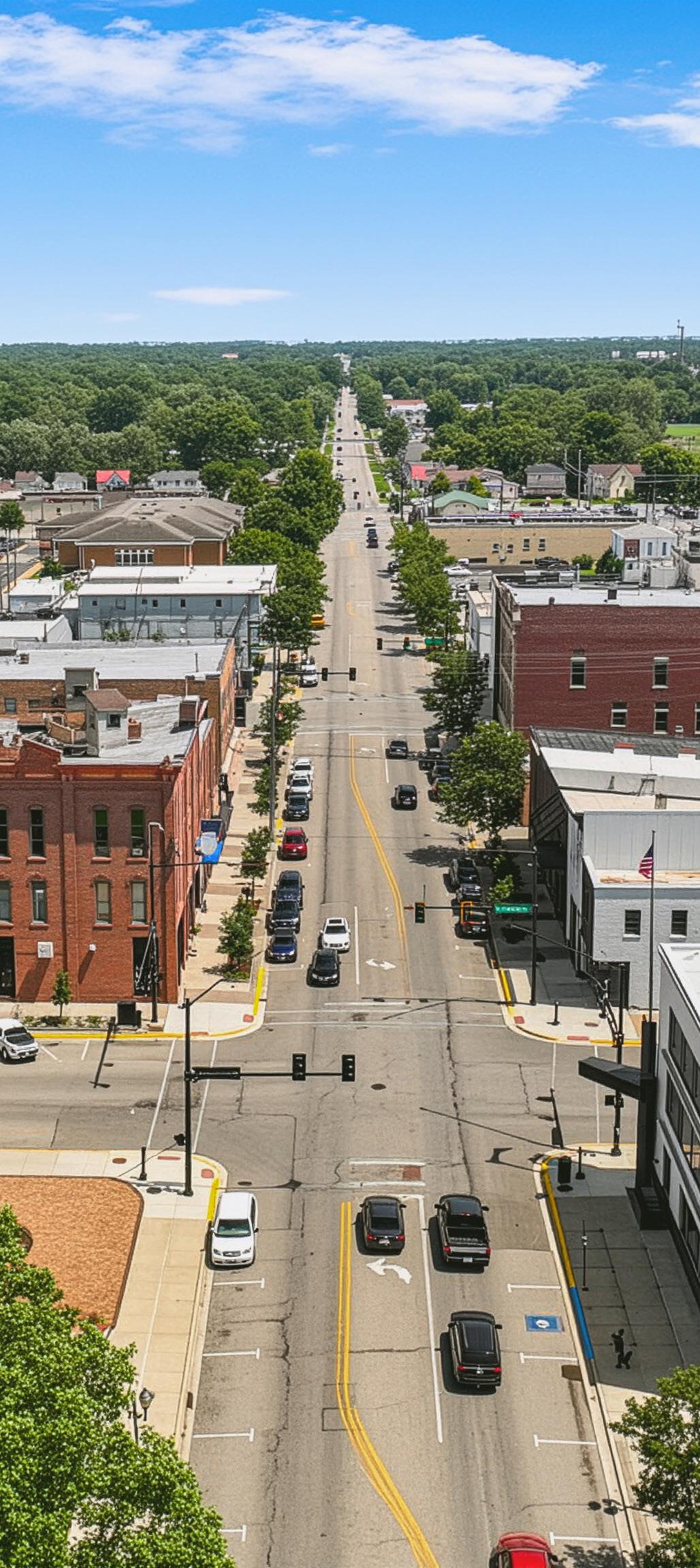

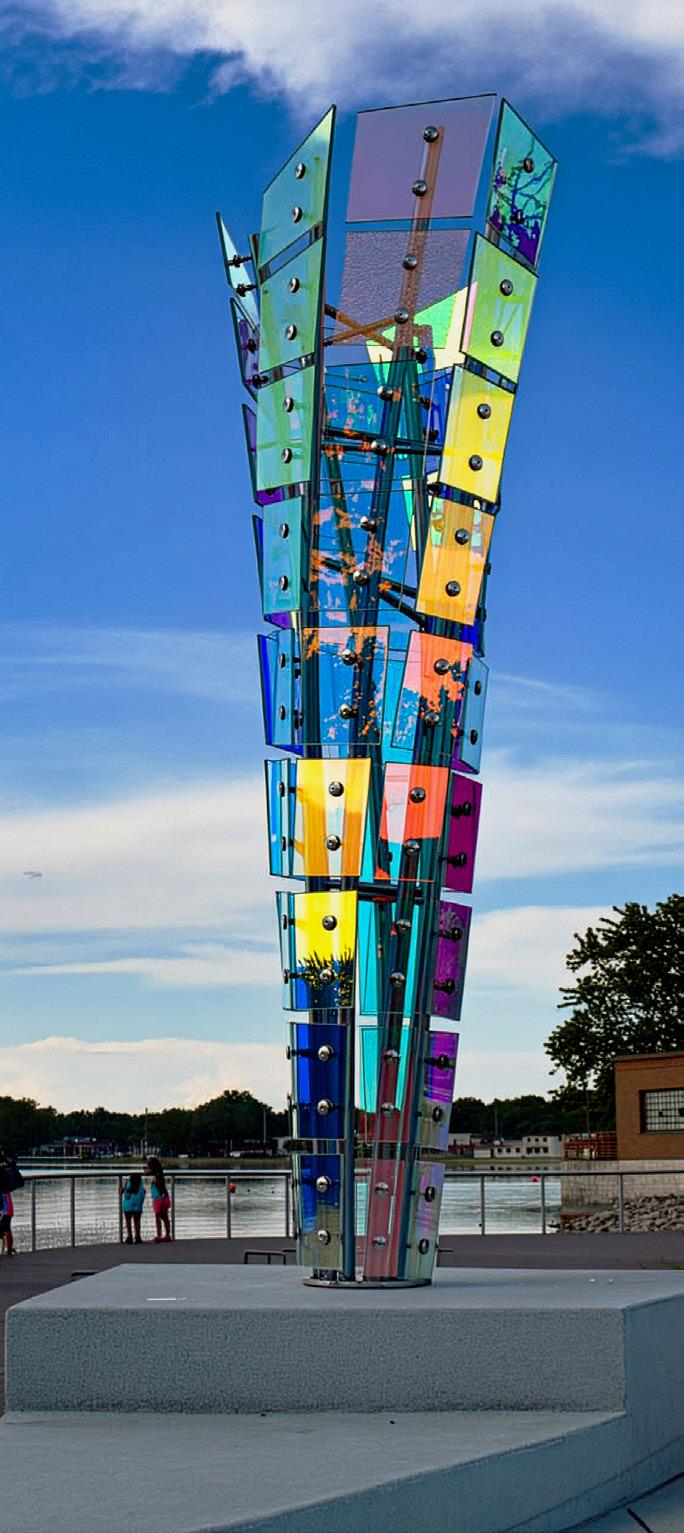
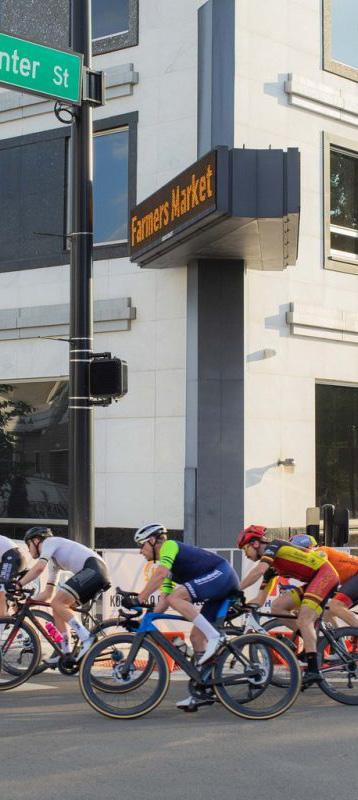












The Downtown Warsaw Cultural Arts District Plan serves as a comprehensive guide for leveraging the city’s cultural assets for sustained economic growth, with the ultimate goal of creating an Indiana Arts Commission-designated Indiana Cultural District� Developed through a multi-phased process of research and community engagement, this plan focuses on transforming downtown Warsaw into a vibrant, well-recognized, and labeled mixed-use cultural center� It features unique, authentic art and a cultural identity that makes the district memorable to visitors, residents, and investors alike�
This document is the necessary next step in a series of strategic efforts� It is built upon a solid foundation of recent, extensive strategic work that has consistently identified arts and culture as essential to Warsaw’s future economic vitality� Key previous planning efforts, including the Downtown Warsaw 2030 Strategic Plan , the Hyett Palma 2023 Downtown Action Agenda , and the Brookings Institute/LISC Critical Corridor Connections Plan , all established a clear mandate for a “vibrant and growing, culturally focused downtown”� These plans specifically called for achieving an official state cultural district designation and solidifying downtown as the city’s “corporate, civic, and cultural center�”
Implementation of this plan is the critical step to leverage these previous efforts and use the arts for economic growth� It provides the detailed strategies for enhancing public spaces and creating the dynamic downtown experience envisioned by the community - a vision that aligns perfectly with the state’s focus on talent attraction as championed by the Indiana READI program� This document provides the needs-based strategies and placemaking recommendations required to make Warsaw a place where creative professionals want to live and work, where businesses want to invest, and where the entire community can experience a richer quality of life�

This part of the plan outlines the high-level strategic goals for the Downtown Warsaw Cultural Arts District. These goals provide the foundational argument for why this plan should be implemented and why downtown Warsaw is a strong candidate for designation as a state-recognized cultural district.
ESTABLISH DOWNTOWN WARSAW AS A REGIONAL HUB FOR ARTS AND CULTURE
CULTIVATE A THRIVING AND SUSTAINABLE CREATIVE ECONOMY
OBJECTIVES
1. Launch a public art program to create regional landmarks and points of interest.
2. Establish a unique art corridor to improve pedestrian and bike connections between downtown and key local assets.
3. Redevelop vacant, underutilized spaces to provide venues to host different performance artists and organizations from around the County and region.

OBJECTIVES
1. Provide accessible, low-cost opportunities for local artists to exhibit and sell their work and performers to perform.
2. Create dedicated spaces for artistic creation, collaboration, and learning.
3. Create spaces for culinary entrepreneurs to start and grow businesses and spaces for culinary anchors to grow their business.
4. Implement a regular schedule of public art commissions.
CREATE A DYNAMIC AND COHESIVE DOWNTOWN ENVIRONMENT THROUGH PLACEMAKING
OBJECTIVES
1. Visually unify the downtown district with a cohesive brand and identity.
2. Transform underutilized public spaces into vibrant, pedestrianfocused areas.
3. Enhance walkability and the pedestrian experience through creative interventions.
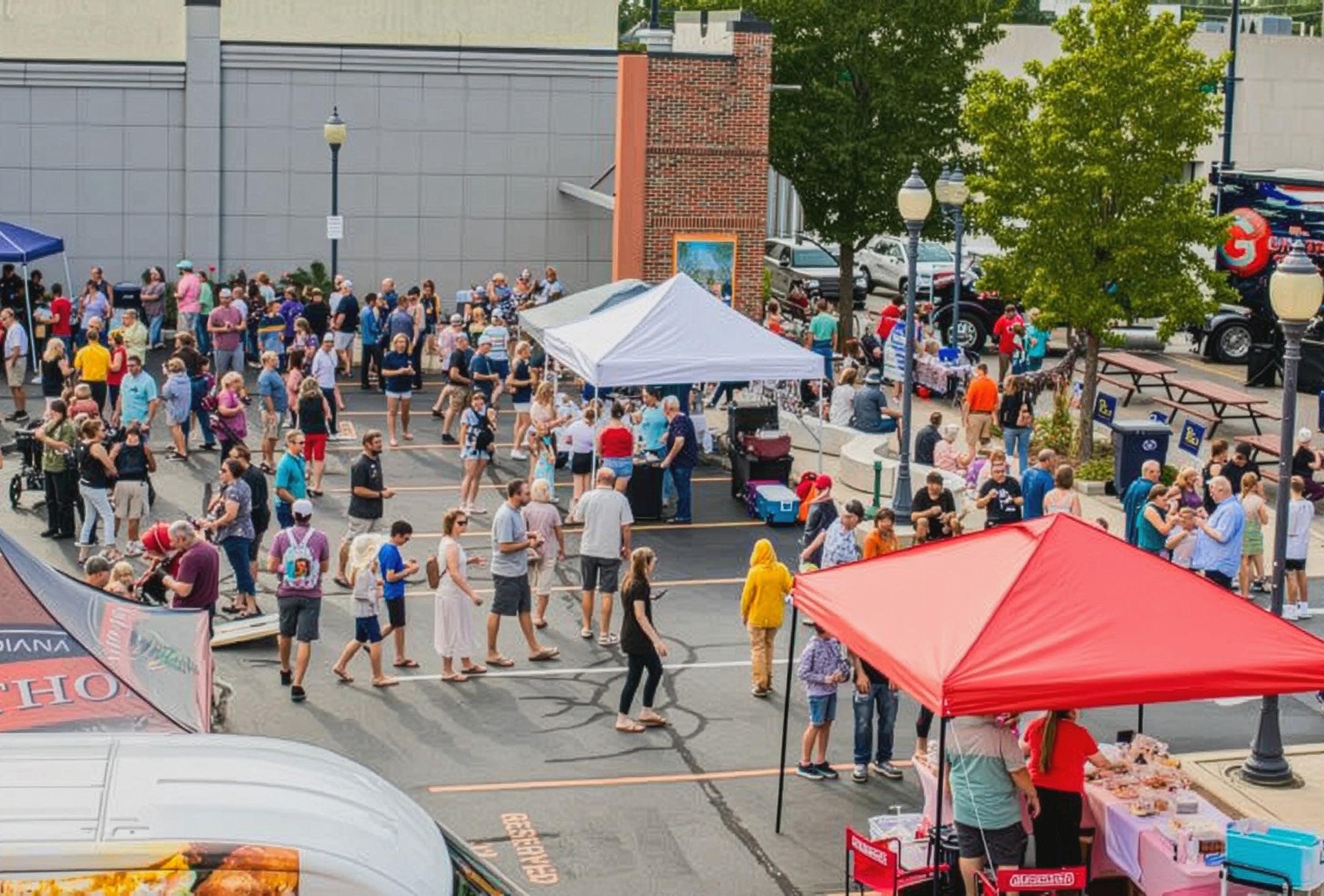
This Plan is built upon a solid foundation of recent strategic work that has consistently identified arts and culture as essential to downtown Warsaw’s future. A thorough understanding of the key findings from the Hyett Palma Downtown Action Agenda, Critical Corridor Connections plan, the Hunden Partners Performing Arts Center Feasibility Study and the Downtown Warsaw 2030 Strategic Plan was a critical step in developing the strategies detailed later in this document. While each of these plans address broad community and economic goals, they both emphasize the significant role of the arts and culture landscape in achieving a vibrant downtown.
The Downtown Warsaw 2030 Strategic Plan was created to integrate priorities from several previous studies into a single, cohesive action plan for Main Street Warsaw. The plan establishes a clear and ambitious vision for a “vibrant and growing, culturally focused downtown that is inclusive and progressive and the community’s living room and premiere gathering place.”
• Becoming an Indiana Cultural District: The plan’s central strategy is to make downtown Warsaw a “regionally impactful cultural center” and achieve official designation as a state certified an Indiana Arts Commission designated Indiana Cultural District. This is seen as a critical step to enhance access to state funding, provide greater recognition, and solidify Warsaw’s identity as a creative hub.
• Developing a Public Art Master Plan: The plan explicitly calls for the creation of a cultural district and public art master plan, which is the direct purpose of this document. This objective emphasizes the understanding that a thoughtful, strategic approach to public art is necessary for successful placemaking throughout Warsaw.
• Enhancing the Public Realm with Art: The plan identified specific placemaking goals for integrating art into the physical environment. It focuses on improving alleyways with art, history, and creative lighting. Additionally, creating vibrant gateways to establish a sense of arrival; and hosting more culturally-focused events like art festivals and music series to activate public spaces.
• Activating Underutilized Spaces: A key objective discussed was the need to renovate and convert vacant or underutilized buildings, particularly upper-level spaces, into venues for performance, art, and maker activities. This was seen as a way to both preserve historic architecture and create new cultural assets.

The Hunden Partners study was a critical market and financial feasibility analysis commissioned to determine if there was sufficient demand to support a major transformative project in downtown Warsaw. The study specifically evaluated the viability of a new hotel, conference center, and a large-scale performing arts venue
The study concluded that the proposed project is not only viable but would serve as a significant economic driver for the region. The report provided detailed recommendations on the size and scope of these facilities, including a 150-key hotel and a 450-space parking garage.
• Recommendation for a New Performing Arts Center: The study found clear market demand for a new 1,250-seat performing arts center downtown. The analysis showed this venue would be capable of hosting larger-scale concerts, touring Broadway shows, and symphony performances that are currently difficult or costly to produce at the successful but uniquely configured “in-the-round” Wagon Wheel Center for the Arts.
• Economic Impact: The discussion of the performing arts center’s potential was backed by strong financial projections. The study projected that a new venue would be a powerful economic engine, generating $316 million in new spending and supporting over 61 new full-time jobs over a 30-year period.
• Capturing Downtown Visitor Spending: A key finding was that a downtown venue would be far more effective at capturing visitor spending in local shops and restaurants. The study noted that many visitors to the Wagon Wheel’s current location travel directly to and from home, limiting the economic benefit to the downtown core.

Commissioned by the City of Warsaw to revisit and update the original 2002 Downtown Action Agenda, this 2023 plan focuses on refocusing and recharging Warsaw’s downtown enhancement efforts for the next seven years. It strongly emphasizes integrating arts and culture as key drivers for economic vitality and placemaking.
• Position Downtown as a Cultural Hub: Recommends positioning the downtown target area (Fort Wayne St to Jefferson St, Lake St to Indiana St) as the vibrant “Food, Art, Culture, and Specialty Retail Hub” of the county.
• Integrate Performing Arts: Calls for making performing arts a growing and integral part of Downtown’s character, including music in food/drink establishments, performances at events, and arts in public spaces.
• Embrace Public Art: Recommends continuing to install public art, embracing multi-cultural art, and treating streetscape elements like benches and bike racks as opportunities for artistic expression.
• Activate Public Spaces: Suggests creating “Festival Streets” for block parties and events, creating a covered event pavilion (potentially on the City Hall parking lot), and transforming infrastructure elements (like the transmission pole in Central Park) into public art.
• Pursue a Performing Arts Center: Identifies the construction of a modern, high-quality performing arts center in downtown as a key long-term goal to serve the region and incorporate existing assets like the Wagon Wheel Center for the Arts.
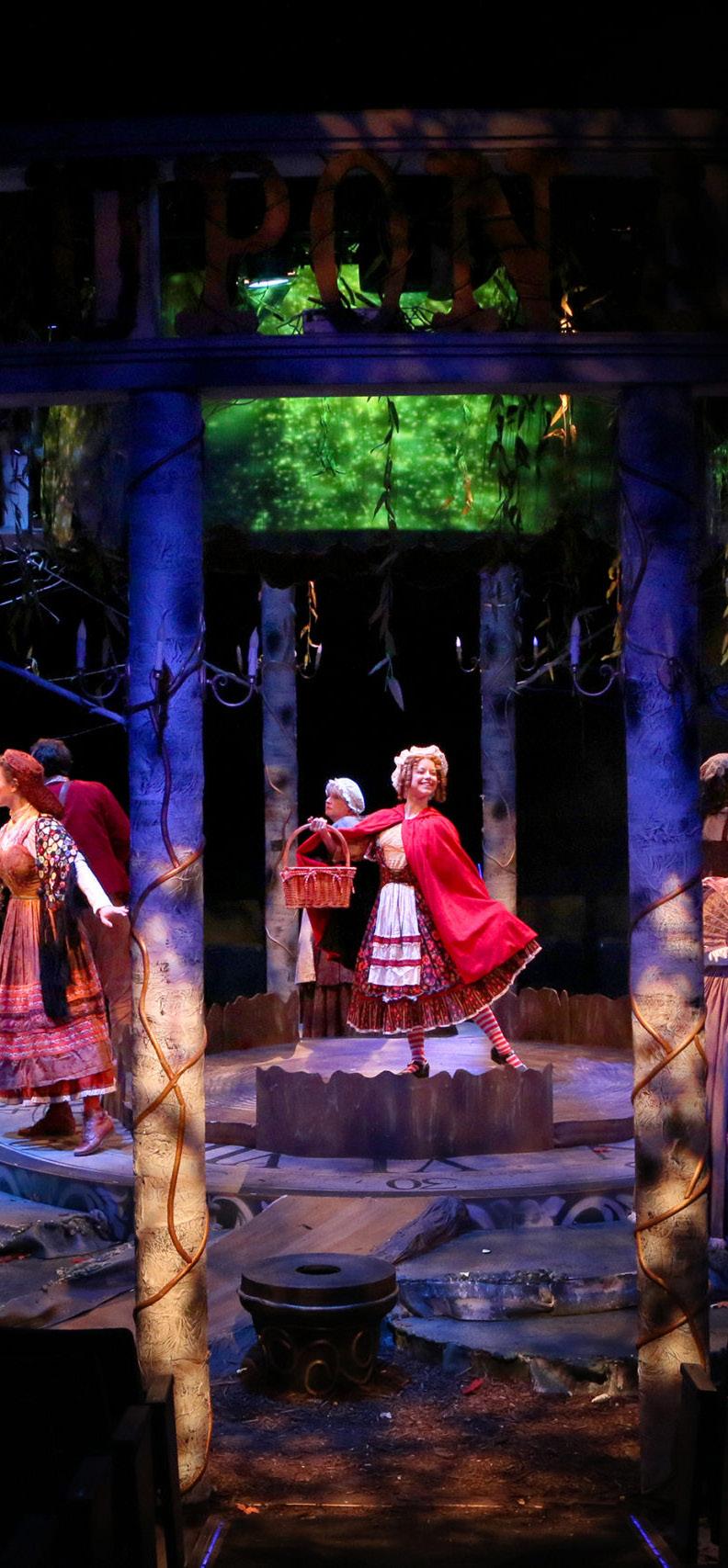


Developed in partnership with the Brookings Institution and LISC, and funded by the IEDC, this Community-Centered Economic Inclusion (CCEI) agenda provides place-based investment strategies focused on Warsaw’s “priority area”—the corridors connecting Downtown, Winona Avenue, Center Lake, and the Argonne Corridor. Its goal is to leverage these connections to uplift communities and close gaps in economic opportunity through integrated community, economic, and workforce development.
• Solidify Downtown as the Cultural Center: Aims to grow downtown as the corporate, civic, and cultural center of the community.
• Connect People and Place: Emphasizes improving physical connections and public access between key assets, including making Winona Avenue walkable, connecting Downtown to Center Lake via the Buffalo Street project, and developing a “Blue-Ways” hub connecting all three lakes for recreation and entertainment.
• Activate Key Sites: Recommends catalytic projects for underutilized areas, such as activating the County Fairgrounds as a year-round destination (potentially with an event center, park space, and restaurants) and executing the Argonne Corridor plan, incorporating industrial heritage into placemaking like murals and sculptures.
• Support a Performing Arts Center: Includes planning for catalytic downtown efforts, specifically endorsing the concept of a major performing arts center and conference hotel, potentially combined with a structured parking garage, as a long-term strategy.
• Foster a Diverse Entrepreneurial Culture: Calls for inspiring a diverse and dynamic culture of entrepreneurs, including supporting minority-owned businesses along Winona Avenue.

Achieving designation as an Indiana Cultural District is a central goal of this plan, not only for the cultural recognition but for the profound economic benefits it can unlock. This initiative aligns perfectly with a major statewide focus. In 2024, the Indiana Economic Development Corporation (IEDC) and Lilly Endowment Inc. launched a statewide arts and culture initiative, backed by approximately $65 million in READI 2.0 grant funding, to enhance quality of life, rehabilitate deteriorated or abandoned properties and build vibrant communities.
In addition, Northeast Indiana Regional Development Authority (RDA) which allocates READI 2.0 funding in the region that includes Warsaw, received $45 million with goals that include accelerating the region’s trajectory as an innovative, vibrant and winning region by growing community connectivity and cultural vibrancy.
The creative economy is best defined as “the people, enterprises, and communities that transform artistic and cultural skills, knowledge, and ideas into economically productive goods, services, and places.” It is the crossroads of creativity, culture, and commerce.
While this includes familiar jobs like artists, actors, musicians, and designers, it also encompasses a wide array of industries, including film production, advertising, and architecture. Critically, it also includes sectors that are vital to Warsaw’s authentic brand, such as the culinary arts and humanities
• The Challenge: In a 2022 study by Pattern and Pathemy, arts and cultural production added $9.3 billion to Indiana’s economy. However, this represented just 2.0% of the state’s Gross State Product, ranking Indiana 47th in the nation. This underperformance has a direct impact on Hoosier incomes; Indiana’s average annual wage is nearly $12,000 below the national average, a gap that coincides with its low density of arts and culture.
Investing in the creative economy is a direct and powerful investment in economic growth. The most successful communities are those that embrace art and culture to unlock their economic potential.
• Talent Attraction & Retention: A vibrant cultural scene is a critical quality-of-life asset for attracting and retaining a skilled workforce. This is especially true for younger generations like Gen Z, who rank cultural activities as nearly as important to their identity as their work. People with access to arts are more attached to their communities and less likely to leave.
• Innovation & Entrepreneurship: Entrepreneurial hubs coincide with robust arts and culture economies. This “applied creativity” is a critical skill for innovation, and creative professionals are integral to the success of all advanced industries, including Indiana’s STEM-focused sectors.
• Quality of Life & Place: This is the core of creative placemaking. Leveraging arts and culture shapes a community’s character, boosts tourism, strengthens social connections, improves community pride, and revitalizes public spaces

The plan commissioned by the Northeast Indiana Redevelopment Authority with $100,000 in funding provided by Lilly Endowment takes a close look at the creative economy in the 11 counties of the Northeast Indiana region, examining its strengths, challenges, and opportunities to better leverage its creative assets to benefit residents, businesses, and communities and help guide the region’s proposals for $65 million in arts and culture funding from the Lilly Endowment, administered by the Indiana Economic Development Corporation (IEDC). The plan was developed by Mt. Auburn Associates.
Key Findings
• A 2022 statewide survey found that 88 percent of local government leaders and 96 percent of tourism and community foundation leaders agreed that arts and culture represent an economic development opportunity.
• The vibrancy of a community’s arts, culture, and public space plays a decisive role in attracting and retaining talent, especially in places striving to grow their workforce and strengthen regional appeal. Creative placemaking It serves as a strategic lever in the talent equation, helping transform a region from a low-cost location to a place where people choose to live, raise families, and build careers.
• Cities, local governments and philanthropic organizations play an increasingly important and vital role in supporting and in sustaining arts and culture in Northeast Indiana.
Five Overarching Strategies for the Region
1. Strengthen the music and film/media industries through targeted programs, support services, and investment opportunities.
2. Develop a robust creative talent pipeline by attracting, training, and retaining individuals who wish to live and work in Northeast Indiana.
3. Increase public awareness and appreciation of the creative economy’s contributions to regional prosperity and quality of life.
4. Invest in creative infrastructure, including facilities, networks, and support systems that sustain long-term growth.
5. Enhance regional cultural tourism through coordinated marketing, programming, and partnerships across arts, culture, and tourism sectors.
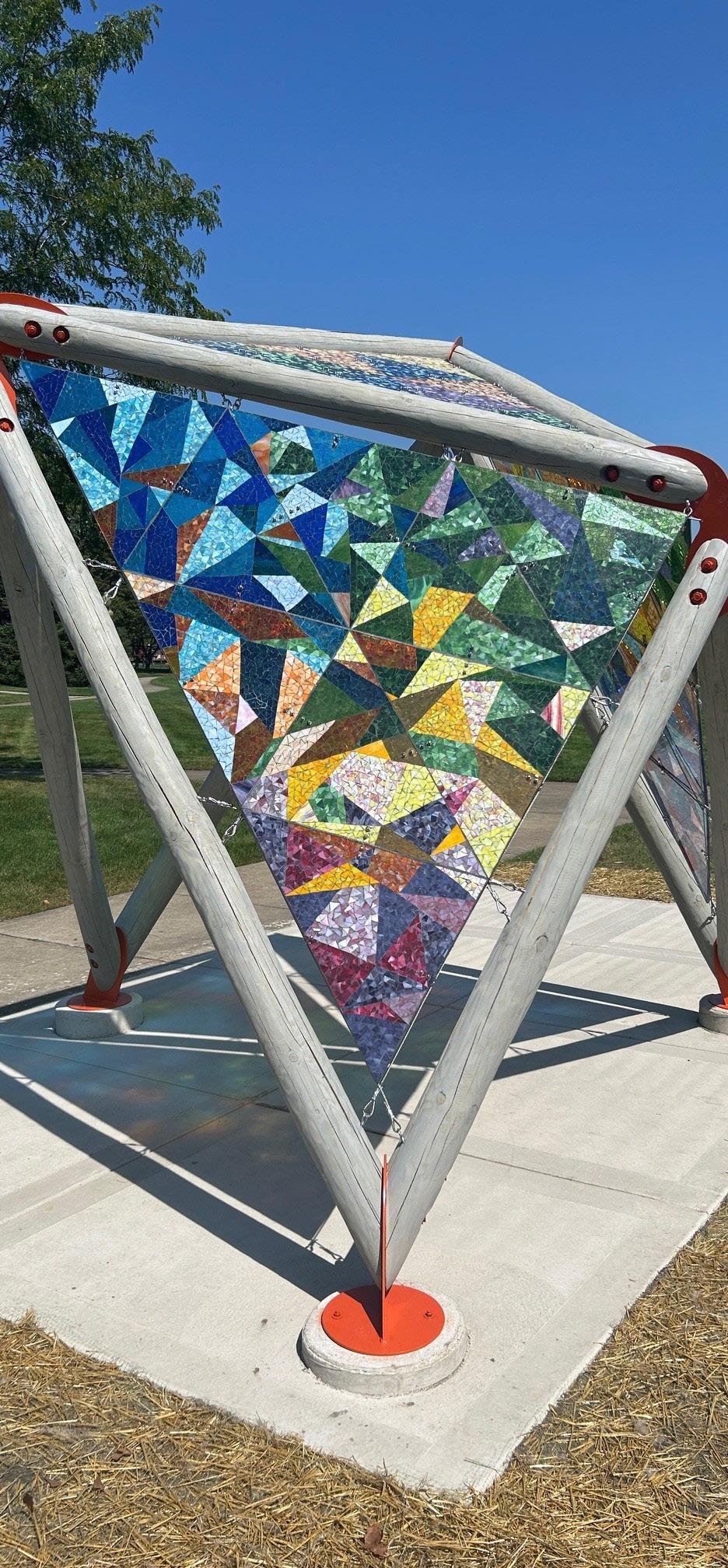
The Tippecanoe Arts and Cultural District, which encompasses the downtowns of Lafayette and West Lafayette, serves as a powerful example of how a dedicated focus on arts and culture can become a central driver for a county’s economic and community life. The Tippecanoe district has successfully leveraged its varied cultural assets, including a hub of galleries, theaters, diverse dining, and specialty retail, to drive measurable economic outcomes. The district supports:
• 2,386 creative jobs�
• $42�5 million in creative industry earnings annually�
• $3�6 million in revenue for its cultural nonprofits alone�
This cultural vibrancy has not only created a high quality of life but has also made the district a major tourism driver. This proven reputation as a destination has, in turn, spurred significant private investment, including a $50 million mixed-use high-rise and other multi-million dollar projects .
For Warsaw, this model reinforces the core goals of the plan: that becoming an Indiana Cultural Arts District will be a powerful tool for attracting and retaining the skilled talent Warsaw’s key industries depend on. It shows that by creating cultural destinations, Warsaw can boost tourism and local spending, which directly supports the small business community.

Kosciusko County has a significant creative economy with Warsaw and surrounding area anchoring it. Warsaw is home to a vibrant and growing visual arts scene and downtown Warsaw already serves as a public canvas, with a collection of murals and sculptures that have been embraced by the community. Together, these established cultural assets and existing public artworks contribute significantly to Warsaw’s quality of life , making it a more attractive place for the skilled workforce its key industries depend on. By establishing a formal cultural district, Warsaw can strategically connect and leverage these assets, amplify their collective impact, and attract new talent and investment.
• Kosciusko County Strengths: 2023 census data provided by Wesley’s Project show that Kosciusko County has a significant creative economy spanning 26 industries, 283 businesses and a workforce of 4,415 with total earnings of $126.9 million annually.
• The Warsaw Strengths: Warsaw possesses a specialized creative workforce. According to 2025 data for Warsaw’s 10-minute drive-time area, 2.4% of the workforce is employed in “Arts/Design/Entertainment” occupations. This concentration is higher than the U.S. average of 2.1%. The resulting Location Quotient of 1.14 confirms that Warsaw is already more specialized in creative occupations than the national average.
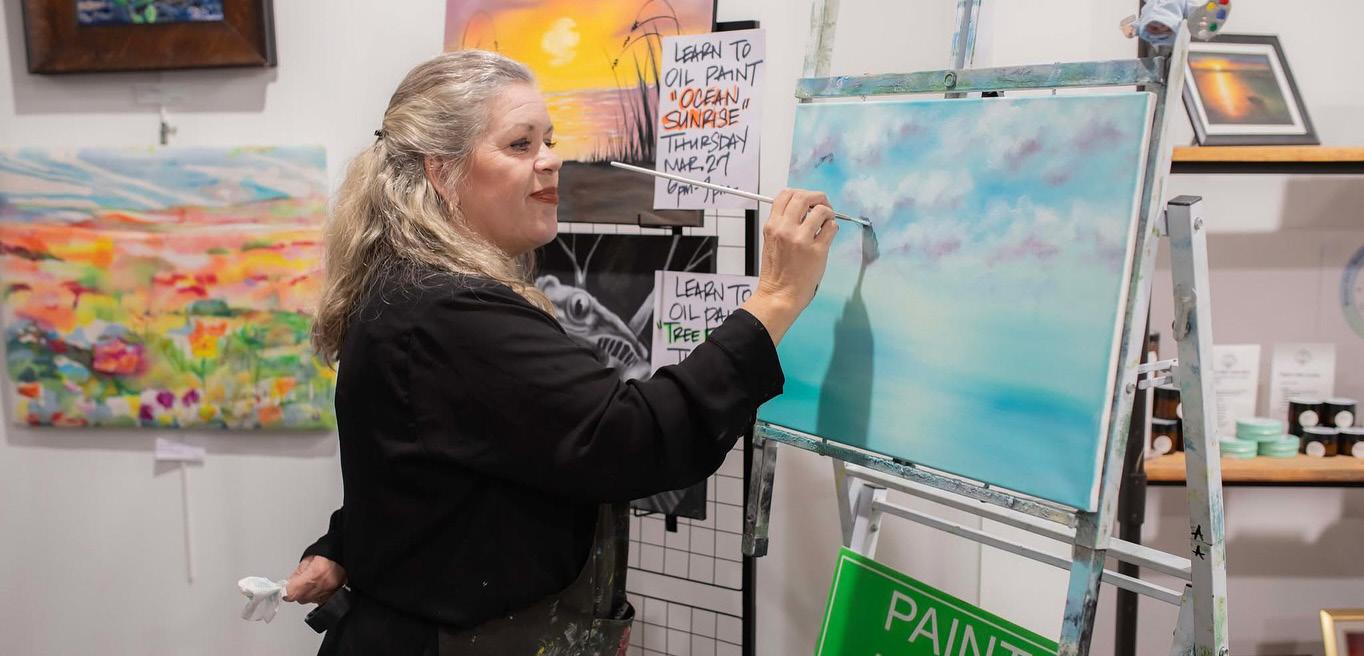

• Courthouse Square National Register
Historic District
• Kosciusko County Historical Society and Museum
• 10+ murals
• 7 sculptures
• 4 art galleries
• Walk Score of 75
• Bike Score of 52
• 20+ Shops and service retail businesses
• 15+ Restaurant/bars
• 4 Bakeries/coffee destinations
• 4 Parks totaling 18 acres
• Zimmer Biomet Center, Lake Pavilion, and the 130-acre Center Lake
• 3 News/media outlets
• 2 Churches
• 2 Fraternal organizations
• 1 Library
This plan provides the roadmap to build on this existing strengths and assets. By establishing a formal cultural district, Warsaw can strategically tap into this multi-billiondollar statewide economy and attract talent for its key industries.








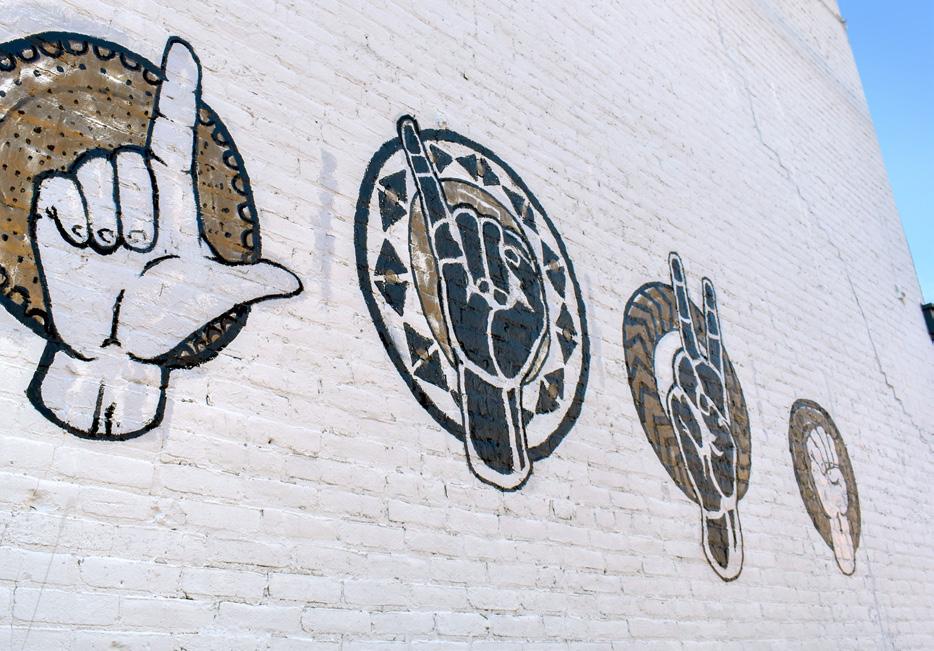

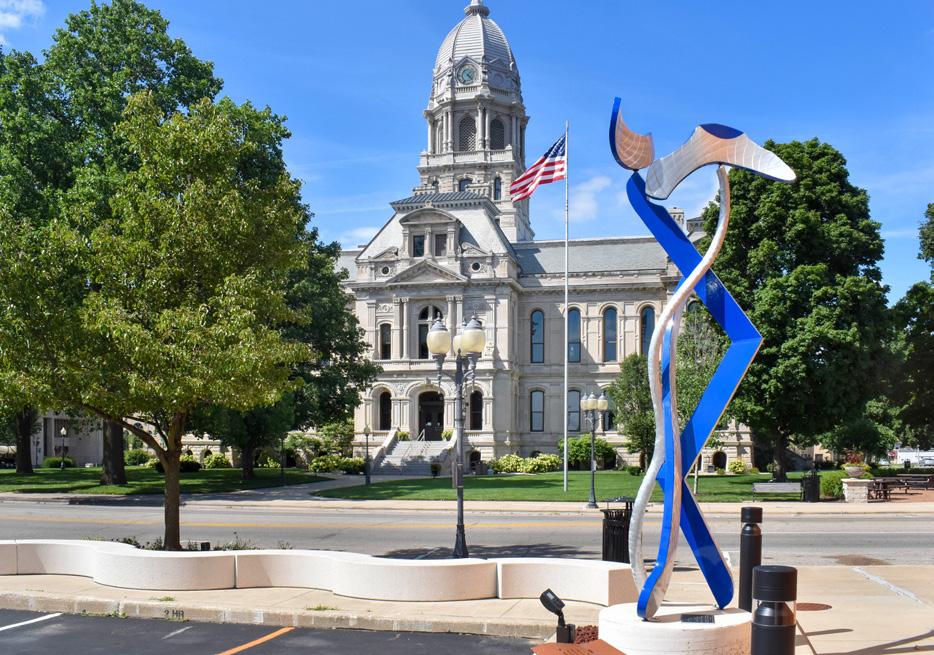
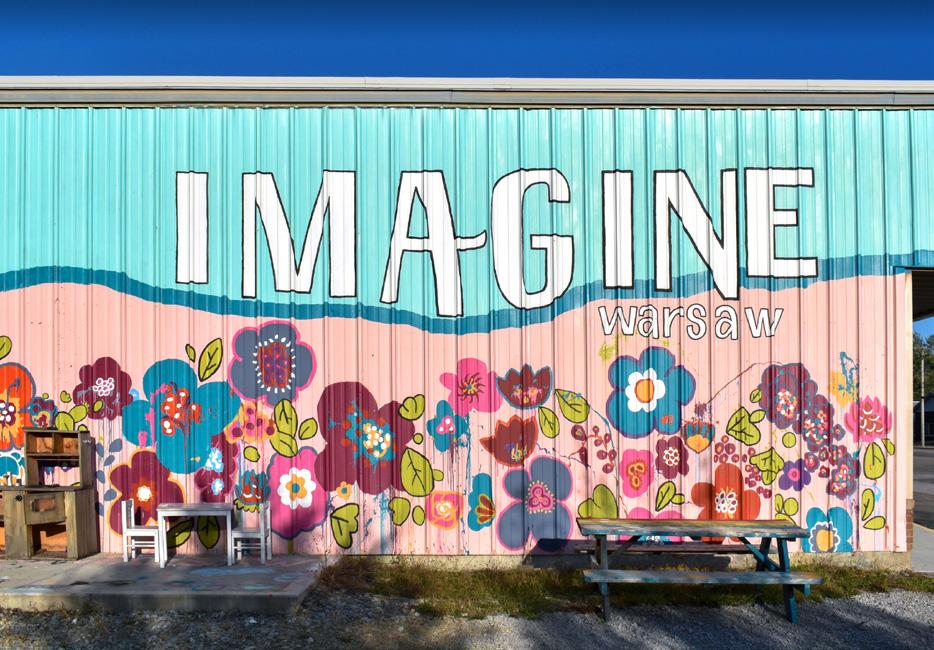
For the Downtown Warsaw Cultural Arts District to succeed, it must be guided by a clear vision and a smart, actionable strategy. The strategic heart of this plan is built from the ground up, rooted in extensive community engagement to ensure authenticity and supported by detailed driveshed analysis to define the district’s economic potential and regional audience.
This input has been synthesized into a powerful vision for a culturally focused downtown that serves as an economic engine for the entire community. To bring this vision to life, a strategic placemaking framework based on three core principles-Activate, Beautify, and Connect-provides the methodology for every proposed project.
Understanding who this cultural district will serve is paramount to its success and sustainability. Analyzing the drivesheds is crucial for several reasons:
1� Defining the Audience: It identifies the size and characteristics of the potential local, regional, and even tourist populations who could become patrons, participants, and supporters of the district’s activities and businesses.
2� Assessing Market Potential: Examining the demographic makeup (age, diversity) and economic capacity (income levels, spending power) within these drivesheds reveals the market depth and helps tailor programming and business recruitment strategies.
3� Informing Talent Attraction: Understanding the surrounding labor force characteristics helps align cultural district development with broader economic goals, ensuring it contributes to attracting and retaining the skilled workers Warsaw needs
4� Justifying Investment: This data provides a quantitative basis for the proposed placemaking projects, demonstrating the potential return on investment in terms of community impact and economic growth.
The following sections delve into this driveshed analysis, providing the data-driven foundation for the specific activation, beautification, and connection strategies recommended in this plan.









This area is the heart of Warsaw, defined by a dense mix of residential neighborhoods and a commercial center. Its most unique feature is its high employee-to-population ratio (102.9), meaning the daytime population nearly doubles with commuters. This creates a large, built-in audience for the Cultural Arts District’s lunchtime and after work programming. The economy is highly specialized in Manufacturing, reflecting the city’s “Orthopedic Capital of the World” identity.













This drive shed represents the broader Kosciusko County community, a blend of urban and rural residents who look to Warsaw as their primary center for commerce and culture. The area is characterized by a stable population and a strong, unified economic identity rooted in Manufacturing, which employs over a third of the workforce. This population is the primary, year-round audience for the Cultural Arts District’s festivals, classes, and regular events.


























Expanding to a one-hour drive, this area includes major regional cities like Fort Wayne and South Bend, creating a large and diverse potential audience of nearly one million people. The economy here is more balanced, with Health Care & Social Assistance emerging as a major employer alongside Manufacturing. This drive shed represents the primary tourism market for the Cultural Arts District’s destination events, such as major performances at the proposed new arts center.














This two-hour radius covers a large portion of the tri-state region and a population of over 4.2 million people. Its economy is highly diversified and closely mirrors national trends, with Health Care & Social Assistance being the largest single employment sector. This area represents the extended tourism market that can be tapped for unique, large-scale destination events, helping to build the Warsaw Cultural Arts District’s brand and reputation on a broader stage.





To ensure this plan is grounded in the community’s vision and addresses practical needs, we conducted a multifaceted engagement process. This process included an open house, multiple focus groups, one-on-one interviews with key cultural and civic leaders, and a second public survey on specific project proposals resulting in more than 600 touchpoints from residents across the community.
Across all conversations, several key themes emerged. The community’s feedback provides a clear mandate for improving physical and programmatic connections, activating underutilized spaces, and enhancing the downtown experience to encourage people to visit and, more importantly, to stay.
The following events were held to collect vital input for this plan:
• Public Open House
• Five One-on-One Stakeholder Interviews
• Focus Groups (several were held with specific community segments):
1. Visual and Performing Arts Focus Group
2. Creatives Focus Group
3. Funders Focus Group
4. Downtown Focus Group
• Steering Committee Meetings
• Two Public Surveys
Interviews and focus groups with leaders from organizations like the Wagon Wheel Center for the Arts , the Warsaw Community Public Library , and Atelier Gallery, as well as groups of creatives, funders, and downtown business owners, revealed a consistent set of assets, challenges, and opportunities.
Identified Assets:
• Strong Anchors: The community deeply values its key cultural anchors, including the Wagon Wheel Theatre, the Warsaw Community Public Library and the two downtown art galleries.
• Historic Core: Warsaw’s “genuinely unique” Courthouse Square, surrounding historic architecture, and strong collection of independent restaurants are seen as the foundation for a vibrant district.

Core Challenges & Opportunities:
1� The “Two-Corridor” Connectivity Problem: The most significant challenge identified is a critical disconnect between Warsaw’s key assets.
a� Wagon Wheel to Downtown: Stakeholders repeatedly described the lack of a safe, appealing, and clear pedestrian connection between the Wagon Wheel Theatre and downtown’s restaurants. Patrons do not feel comfortable walking between the two, which fragments the visitor experience and creates a major barrier. The creation of a “cultural corridor” to link them was a primary recommendation.
b� Downtown to Center Lake: A similar disconnect exists between the downtown core and the Center Lake waterfront. Participants noted a lack of clear wayfinding, lighting, and inviting pathways to draw people between the shops on the square and the natural beauty of the lake.
2� Activating Underutilized Spaces: There is a strong desire to bring life to empty and underused buildings. Stakeholders identified upper-floor spaces (like the ballroom above Male Fashions) and vacant properties (like the historic Firestation or County Sanctuary) as prime opportunities for new performance venues, artist studios, and gathering spaces.
3� Enhancing the “Linger-ability” of Downtown: A consensus exists that downtown is often a “single-purpose” destination. Visitors come for one business and leave, rather than strolling and lingering. This is attributed to:
a. A lack of live music venues and performance spaces
b. A shortage of outdoor seating, “third spaces,” and gathering spots
c. General walkability issues, including street crossing times and faster moving traffic due to cars trying to make the lights.
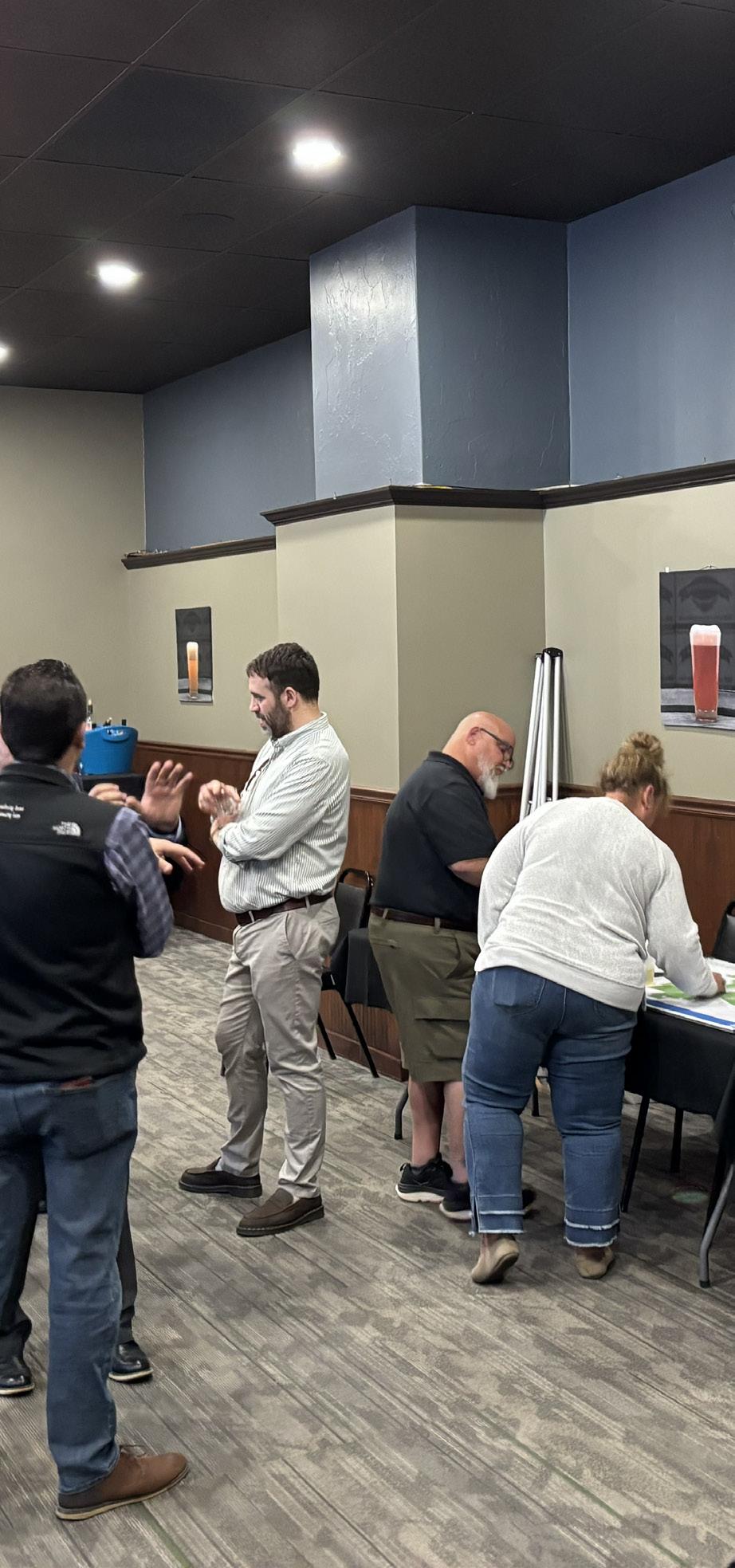
WHAT WOULD YOU LIKE TO SEE IN DOWNTOWN WARSAW?
BRINGING THE COMMUNITY TOGETHER
CREATING OPPORTUNITIES FOR ARTISTS
EDUCATING COMMUNITY MEMBERS
EXPOSING CHILDREN TO THE ARTS
EXPOSING PEOPLE TO HISTORY
ENTERTAINING COMMUNITY MEMBERS
CREATING ARTS FOCUSED EXPERIENCES

WHICH DOWNTOWN PLACEMAKING INVESTMENTS SHOULD BE MADE?
PEDESTRIANIZED FESTIVAL STREET & STAGE
COVERED PAVILION FOR FARMERS MARKET
INTERACTIVE PLAYSCAPE/SCULPTURE GARDEN
ARCHITECTURAL LIGHTING
ENHANCED ARTISTIC, LANDSCAPED GATEWAYS
ALLEYWAY PLACEMAKING
ASPHALT ART/CROSSWALKS
ARTISTIC/BRANDED WAYFINDING SIGNAGE
In April 2025, a public survey was conducted to gather direct community feedback when developing the plan. The survey, which received 235 responses, provides a snapshot for where and how residents want to see arts and culture in Warsaw. NOTE: WEIGHTED


WHAT KINDS OF PERFORMANCE ART WOULD YOU LIKE TO SEE IN WARSAW?
STREET MUSICIANS
IMPROV/COMEDY PERFORMANCES
MUSIC AT FESTIVALS DANCE PERFORMANCES
ALL OF THE ABOVE
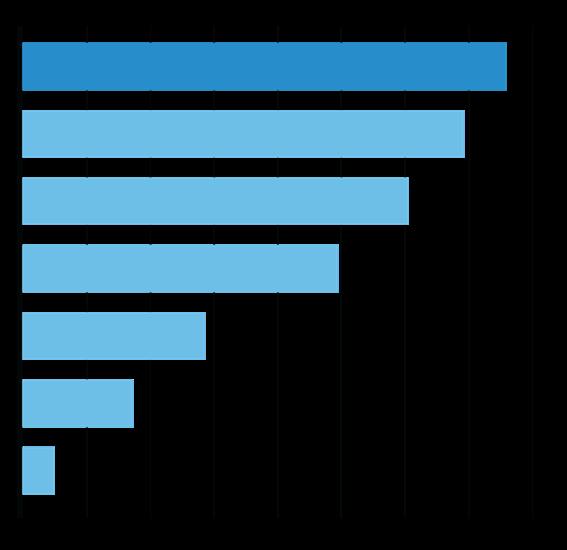

The survey results directly validate the core strategies of the Downtown Warsaw Cultural Arts District plan which are presented later in this document, providing a data-driven foundation for its key initiatives.
• Justification for Placemaking:
The strong desire for a festival street, art in parks, gateways, and public buildings supports the plan’s “Beautify” and “Connect” pillars.
• Guidance for Public Art Investment: The overwhelming preference for murals and sculptures gives a clear direction for the types of art to commission.
• Support for Active Programming: The demand for live music, festivals, and exhibitions reinforces the need to create activated public spaces and dedicated venues
To ensure the strategies align with community priorities, a second public survey was conducted in September 2025, gathering 331 responses. This survey presented the specific project concepts developed from initial research, focus groups, and stakeholder interviews.
Respondents were asked to rank the projects they most wanted to see implemented. This direct feedback shaped the final recommendations and help narrow the project scope to the projects that best reflect community priorities.
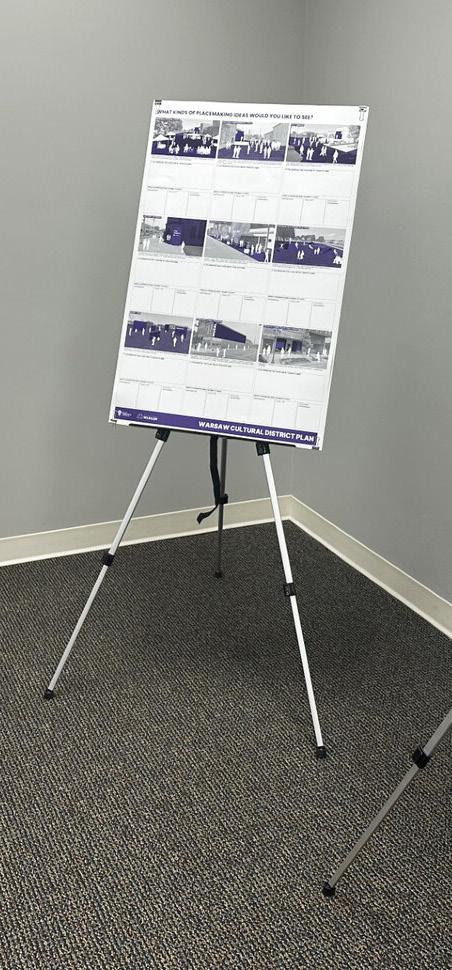

• Buffalo Festival Street: As the plan’s signature project, the Buffalo Festival Street concept received significant positive feedback. Respondents called it “transformative for downtown.” Supporters strongly endorsed creating a dedicated, regular space for events and community gatherings that serve visitors, and residents alike.
• The First Artspace: The community responded very positively to the adaptive reuse of a former First Christian Church, calling it a “wonderful idea” to “showcase the history but also exhibit the now”.
• The Buffalo Trot (Art Trail): Feedback confirmed that “beautifying the streetscape is a good investment for downtown”. Respondents saw this project as “crucial” for creating a “fun and inviting” connection from downtown’s core to the lake future multi-modal path and cultural corridor, noting its potential to benefit key anchors like the public library.
• Gateway Sculpture Play Park: The idea of creating a “safe play space for families” was seen as a “great addition to any community” and will serve as a cultural anchor for the southern gateway into downtown
• Branded or Artistic Gateways and Wayfinding: Feedback for this project was very positive, with respondents calling it “such a great idea” and “great support for local businesses.”
• Corridor Mural Program: This was a highly popular idea. Respondents stated they are a “big fan” of murals and that they “really enhance neighborhoods”. There was strong sentiment that murals are a great way to “reflect what this town is, not was.”
• Alleyway Arts & Activation: Feedback supported this concept as an “excellent idea” to fix “gloomy” alleys and “make our town more welcoming”.
• Creative Crosswalks: This idea was praised as “cute and simple.” Feedback also highlighted the project’s dual benefit of beautification and pedestrian safety.
• Utility Box Art Wraps: Many respondents noted they “always enjoy these in other cities” and would be happy to see these small, creative interventions in Warsaw.
• Architectural Light Projections: This was a positively rated idea with respondents stating the lights create a “unique and magical nighttime atmosphere” and “extend[s] downtown’s hours of activity.”
• Sidewalk Cafe Parklets: This concept was well received, with feedback stating that these directly address the community-expressed need for “Outdoor seating/side walk cafes” and aids to the “Linger-ability” of Downtown.
• Rotating Public Sculptures: Respondents were enthusiastic about this program and was was reinforced by positive memories of past public art initiatives, with one user stating, “I loved the statues we had a few years ago.”



THROUGH STRATEGIC PLACEMAKING, DOWNTOWN WARSAW’S CULTURAL ARTS DISTRICT WILL BECOME A PREMIER DESTINATION WHERE A CULTURALLY RICH AND DIVERSE ARTS SCENE SERVES AS AN ECONOMIC ENGINE- ATTRACTING INVESTMENT, RETAINING TOP TALENT, AND ENRICHING THE QUALITY OF LIFE FOR THE ENTIRE COMMUNITY.

This plan is guided by a strategic placemaking framework organized around three core principles. These principles are designed to work in concert to transform downtown Warsaw into a vibrant, cohesive, and attractive cultural destination. Each proposed strategy in this plan is intentionally aligned with one or more of these principles to ensure every action contributes to the overarching vision.


This principle focuses on creating energy and activity by transforming underutilized or passive spaces into vibrant hubs for artistic expression, performance, and community interaction. The goal is to give residents and visitors more reasons to come downtown and spend their time, turning the district into an active and engaging destination.
Strategies aligned with this principle will:
• Create new, dedicated venues for performance and public gatherings by reimagining existing public areas like parking lots and alleys.
• Pursue the adaptive reuse of significant historic buildings to establish permanent, multi-use hubs for the arts, complete with spaces for creation, education, and collaboration.
• Implement temporary installations and pop-up events that bring life to vacant storefronts and public areas, ensuring a dynamic and ever-changing downtown experience.
This principle is centered on enhancing the visual identity and aesthetic character of downtown through creative and artistic interventions. The aim is to make the public realm more inviting, inspiring, and reflective of the community’s creative spirit, ensuring that the district is not only functional but also beautiful.
Strategies aligned with this principle will:
• Commission large-scale, high-impact public art, such as murals on prominent building facades, to create memorable visual landmarks.
• Integrate art into everyday infrastructure, transforming functional items like utility boxes, benches, and bike racks into unique and creative elements that enrich the streetscape.
• Establish dedicated outdoor galleries for rotating artworks, ensuring the downtown landscape is continuously refreshed with new and engaging visual art.
This principle is about strengthening the physical and thematic links between different parts of downtown and its key assets, such as the lakes and historic courthouse. The goal is to create a cohesive, walkable, and easily navigable district that tells a unified story and encourages exploration.
Strategies aligned with this principle will:
• Develop artistic trails and pathways that improve pedestrian and bike connections between the downtown core and recreational areas, using art and light to create a safe and engaging journey.
• Use creative interventions at key intersections, such as artist-designed crosswalks, to enhance pedestrian safety while visually and thematically linking different blocks of the district.
• Establish a cohesive visual identity and branding program through artistic wayfinding and signage, which will help define the boundaries of the cultural district and guide visitors to its many attractions.

This chapter details the specific placemaking projects designed to bring the Warsaw Cultural Arts District Plan to life. These initiatives are the direct result of synthesizing extensive community input—gathered through stakeholder interviews, focus groups, and public open house sessions—with the strategic recommendations from previous planning documents. An initial list of potential projects was presented back to the community through the second survey and the feedback received was instrumental in refining, prioritizing, and selecting the final projects included in this plan.
To provide a flexible and strategic path forward, the selected projects are organized into three categories based on their anticipated impact and scale: Transformative, Incremental, and Amplify. This tiered approach allows for early, visible wins through smaller projects, building community excitement and momentum for the larger, more complex initiatives that require significant partnerships and funding. This structure ensures every project contributes cohesively to the overarching vision.
• Transformative Projects: These are large-scale, catalytic initiatives designed to anchor the cultural district and create significant, lasting change. They often require major partnerships and substantial fundraising efforts.
• Incremental Projects: These are smaller-scale, high-impact interventions that can be implemented in phases to build momentum over time. They are designed to create early, visible wins that generate immediate excitement and demonstrate progress to the community.
• Amplify Projects: These initiatives are designed to enhance and leverage existing community assets and events. They focus on adding a creative layer to what Warsaw already does well, maximizing the impact of beloved traditions and institutions.
To further clarify how each proposed project aligns with the overarching objectives of the Warsaw Cultural Arts District Plan, every project has been evaluated against the three core plan goals:
1� Establish Downtown Warsaw as a regional hub for Arts and Culture�
2� Cultivate a thriving and sustainable creative economy�
3� Create a dynamic and cohesive Downtown environment through placemaking�
In the following project descriptions, you will find a “Goal Alignment” ranking. This provides a quick visual matrix indicating the degree to which each project is expected to advance these primary goals—high, medium, or low contribution. This ranking system helps illustrate the strategic focus of each project and assists in prioritizing implementation efforts based on desired outcomes.

In addition to aligning with the overarching plan goals, each project is also scored against the plan’s core placemaking methodology: Activate, Beautify, or Connect. These principles define the specific type of placemaking intervention each project represents:
1� Activate: Focuses on creating energy and activity by transforming underutilized spaces into vibrant hubs for artistic expression, performance, and community interaction. These projects aim to give people more reasons to come downtown and linger.
2� Beautify: Centers on enhancing the visual identity and aesthetic character of downtown through creative and artistic interventions, making the public realm more inviting, inspiring, and reflective of the community’s creative spirit.
3� Connect: Emphasizes strengthening physical and thematic links between different parts of downtown and its key assets (like the lakes and courthouse), creating a cohesive, walkable district that encourages exploration.
The proposed projects are enhanced by the introduction of two corridors that link existing assets and proposed projects with each other.
• Buffalo Trot Art Trail: a six-block pedestrian-scale sidewalk that stretching from Jefferson St. to Center Lake will be the location and connection between proposed projects creating a cultural art trail.
• Center St� Cultural Corridor: a proposed art-focused connection between Wagon Wheel Center for the Arts, Warsaw’s longtime cultural anchor and physical “front door” and downtown and its cultural and placemaking assets the “living room”.
In addition, the plan shows how the proposed Market St. multimodal trail project helps create connections for pedestrians and cyclist with downtown and proposed cultural district projects.
Each section of the proposed projects contains a map to show how projects are linked and work together.

THE FOLLOWING SECTION DETAILS THE TRANSFORMATIVE PROJECTS, LARGE-SCALE, HIGH-IMPACT INITIATIVES DESIGNED TO BE ANCHORS FOR THE CULTURAL DISTRICT. THESE ARE FOUNDATIONAL, “GAME-CHANGING” ENDEAVORS THAT WILL CREATE A SIGNIFICANT AND LASTING SHIFT IN THE PHYSICAL, SOCIAL, AND ECONOMIC LANDSCAPE OF DOWNTOWN WARSAW. BY REIMAGINING KEY PUBLIC AREAS AND CREATING MAJOR NEW DESTINATIONS, THESE PROJECTS WILL SERVE AS THE PRIMARY CATALYSTS FOR A MORE VIBRANT, CONNECTED, AND ATTRACTIVE COMMUNITY. THESE PROJECTS ALSO ALIGN WITH NORTHEAST INDIANA CREATIVE ECONOMY PLAN’S OVERARCHING STRATEGY TO “INVEST IN CREATIVE INFRASTRUCTURE, INCLUDING FACILITIES, NETWORKS, AND SUPPORT SYSTEMS THAT SUSTAIN LONG-TERM GROWTH.”


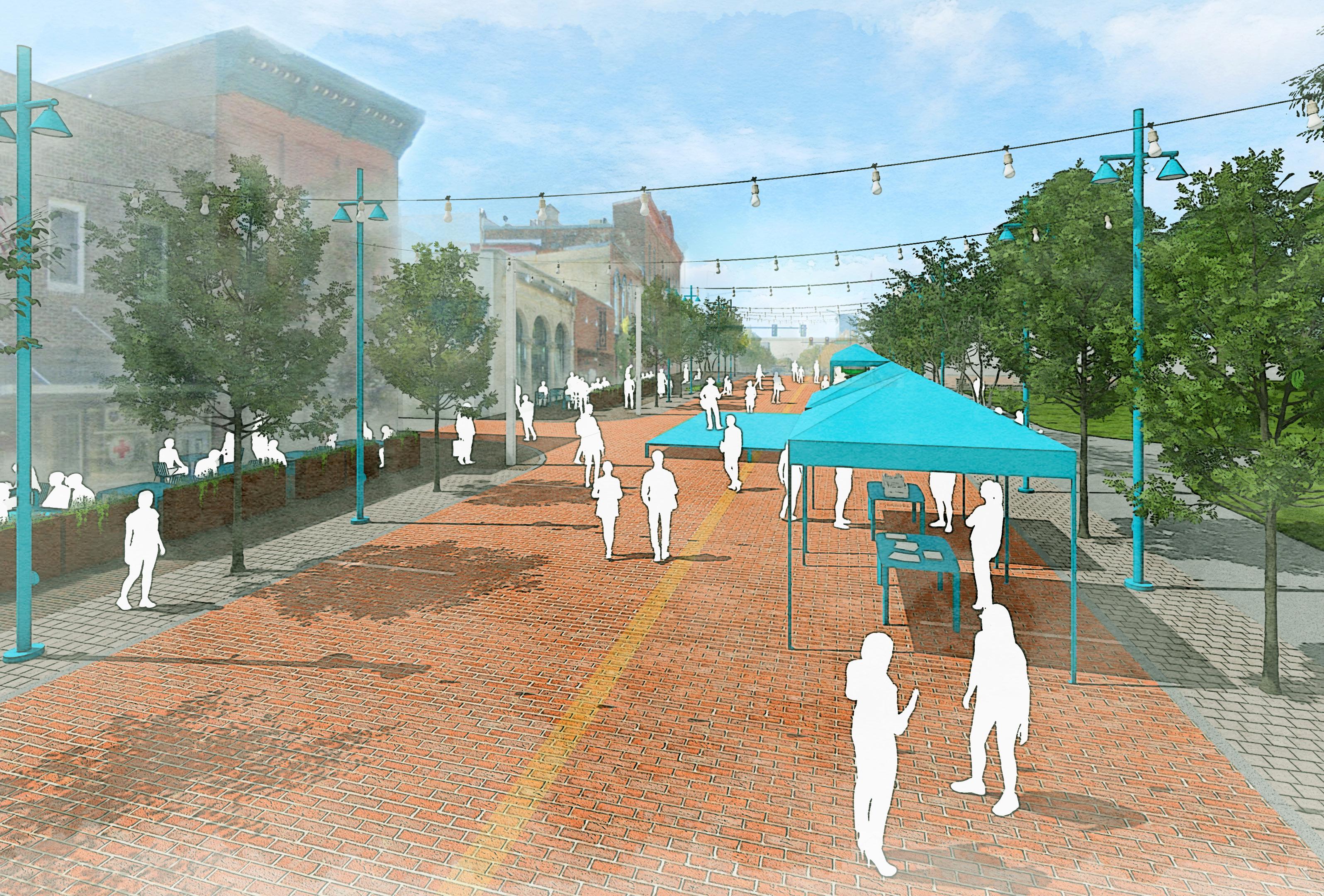

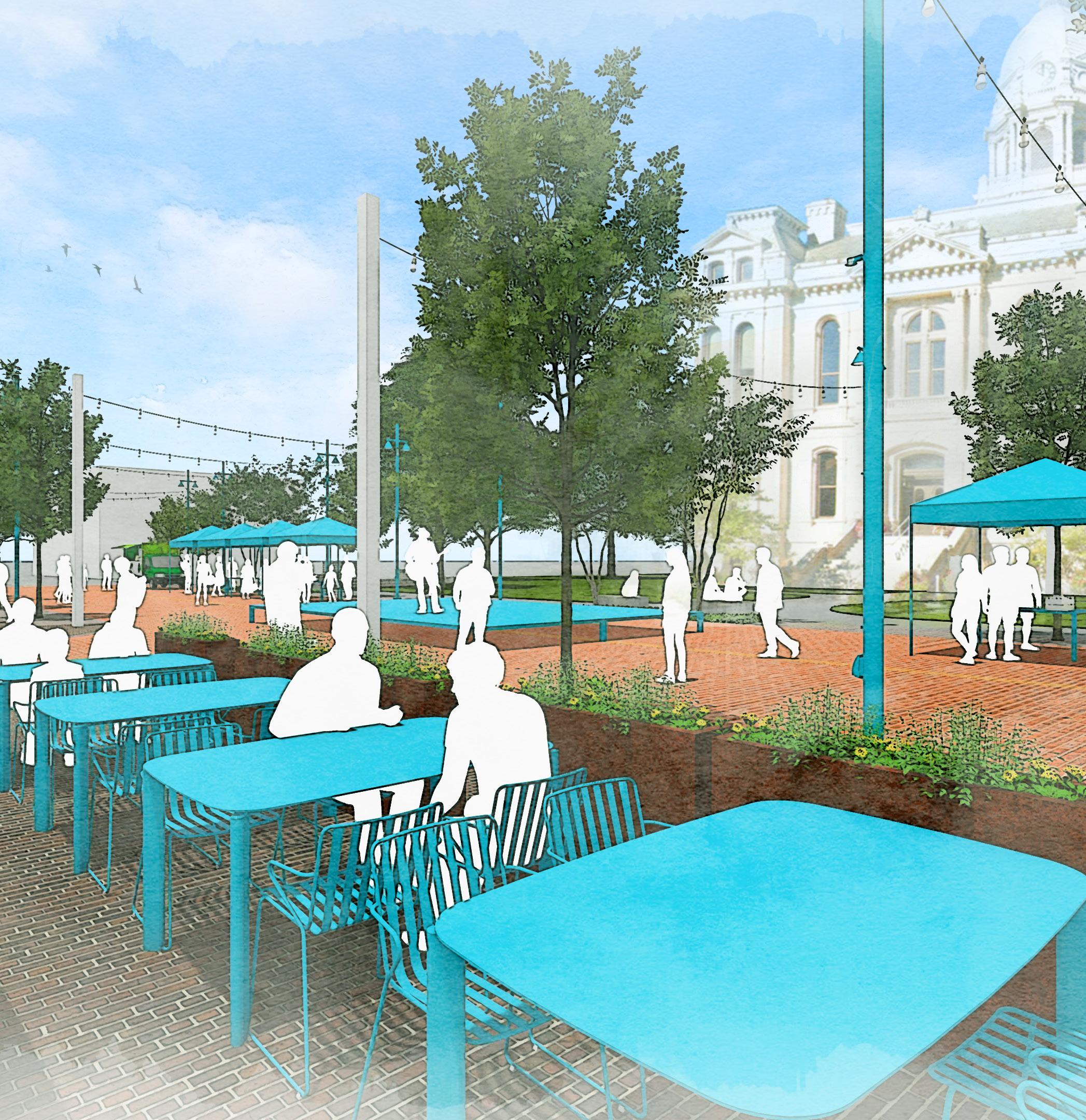
During the planning process, the community expressed a strong desire for more dynamic, programmable public spaces for events. This led to the initial development of three distinct performance venue concepts: the Jailyard Performance Space, City Square, and the Buffalo Festival Street. The second community survey presented these ideas, and the public feedback was clear. The Buffalo Festival Street concept emerged as one of the highest-rated and most enthusiastically supported projects, with respondents calling it “transformative for downtown.” This strong public mandate led to the decision to concentrate resources and efforts on this single, signature project, which best fulfills the community’s desire for a central, flexible event hub that functions as a street when not programmed and easily closed for programming on evenings and weekends.
EXISTING STREET
EXISTING STREET
PROPOSED FESTIVAL STREET
PROPOSED FESTIVAL STREET
PROPOSED STREET
ELECTRIC AND WATER CONNECTIONS FOR FOOD TRUCKS
PREMIUM PAVEMENT TEMPORARY STAGE UNIQUE LIGHTING
ENTRYWAY SIGNAGE AND/OR GATES

CURBS RESTAURANT SEATING PLANTER BUFFERS + PEDESTRIAN SCALE LIGHTING

This project transforms Buffalo Street from Center to Main into a pedestrian-focused space designed for regular closure and programming. Serving as an anchor of the proposed Buffalo Trot art trail crucial link between the proposed parking garage, downtown, and the Center Lakefront, it will become Warsaw’s premiere community gathering and event location. The redesign features enlarged sidewalks for café seating, enhanced ADA accessibility, and dedicated opportunities for artists, culinary entrepreneurs, and community groups to utilize and benefit from the activated space. Consider raised intersections and four way stops to slow traffic.
The street becomes the heart of the arts trail.
It becomes the regional landmark and point of interest of downtown and the greater community. Provides accessible, low-cost opportunities for local entrepreneurial artists to exhibit and sell their work and performers to perform.
Creates spaces for culinary entrepreneurs like food trucks and current culinary anchors to expand sidewalk café seating
Transforms underutilized public space into vibrant, pedestrianfocused community gathering area. Enhances walkability and the pedestrian experience through creative interventions. Provides opportunities for branding and wayfinding.
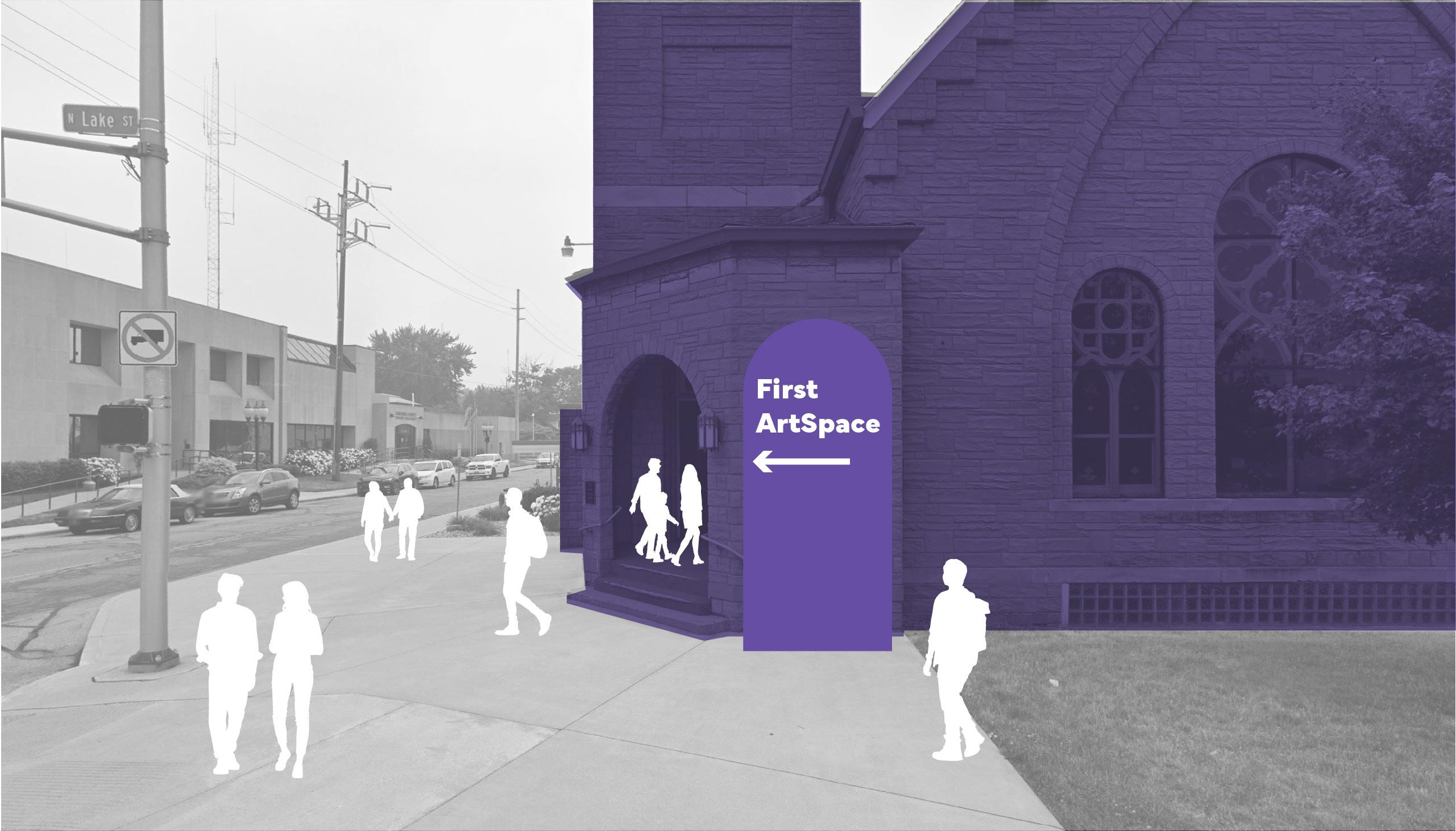
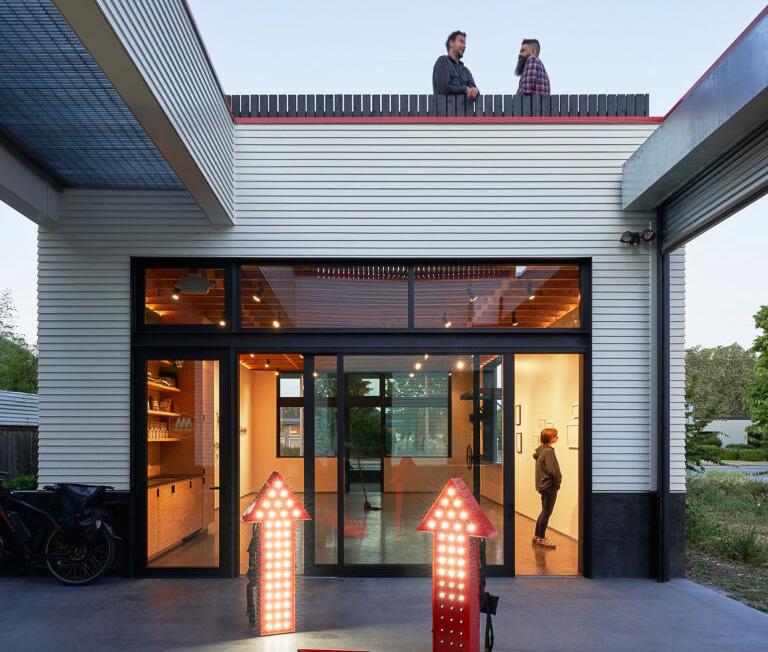


Previous planning studies called for a new arts center in Downtown Warsaw. “The First Artspace” project directly answers this call by transforming the existing Former First Christian Church at the corner of Main & Lake into a premier performance and arts hub- preserving a key downtown historic landmark and retaining the building’s iconic architectural silhouette.
The vision includes transforming the sanctuary into a unique performance venue, while the offices would be converted into much-needed artist studios and classrooms. The basement’s offices and conference rooms would be converted to makers space for woodworking and ceramics and cafeteria space into a commercial kitchen for classes, catering and food entrepreneurs. As envisioned, this space will contribute to the creative economy and cultural district by providing spaces for artists to learn, create and perform in their areas of expertise including visual, performing and culinary arts.
A feasibility study will be needed to define a sustainable funding, ownership, and operating model for the venue. While that is underway, the building can be activated with temporary events and performances. This strategy will demonstrate its value as a cultural space, generate community support, and build momentum on the proven market demand.
Redevelops a significant vacant building into a landmark regional venue for performance and art. Creates dedicated, affordable spaces for artistic creation, collaboration, and learning (studios/ classrooms).
Transforms an underutilized and prominent historic building into a vibrant hub of activity.



Develop an interactive sculpture park on the Buffalo Trot Art Trail on downtown’s southern edge, featuring artistic structures for children’s play and exploration, serving as a vibrant gateway to the city center. Price Estimate $50,000 - $75,000
Establishes a new, memorable destination that merges public recreation with destination public art. Creates a unique quality-oflife asset that directly supports talent attraction and retention goals. Visually unifies the district’s brand by creating a distinct and memorable sense of arrival.

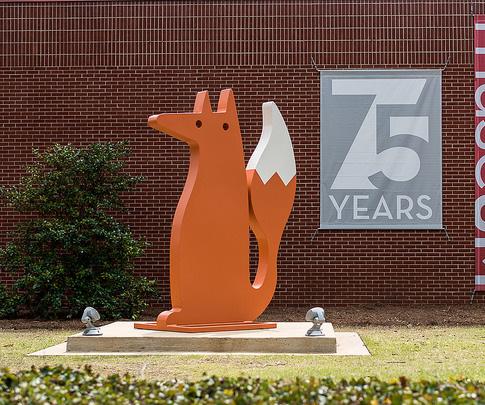

An art + light trail along newly enhanced pedestrian and bike connections along Buffalo Street to Center Lake from downtown Warsaw The art trail connects some of the transformative projects and provides locations for incremental and amplify projects as well as providing visual artists opportunities to participate in commissions.
Creates a new, highly visible public venue for community performances. Establishes a new programmable point of interest adjacent to the historic courthouse.
Creates a dedicated, flexible space for artistic collaboration and community-led cultural events. Transforms an underutilized public parking lot into a vibrant, pedestrianfocused gathering area.
Price Estimate $20,000 - $50,000
Locations Buffalo Street


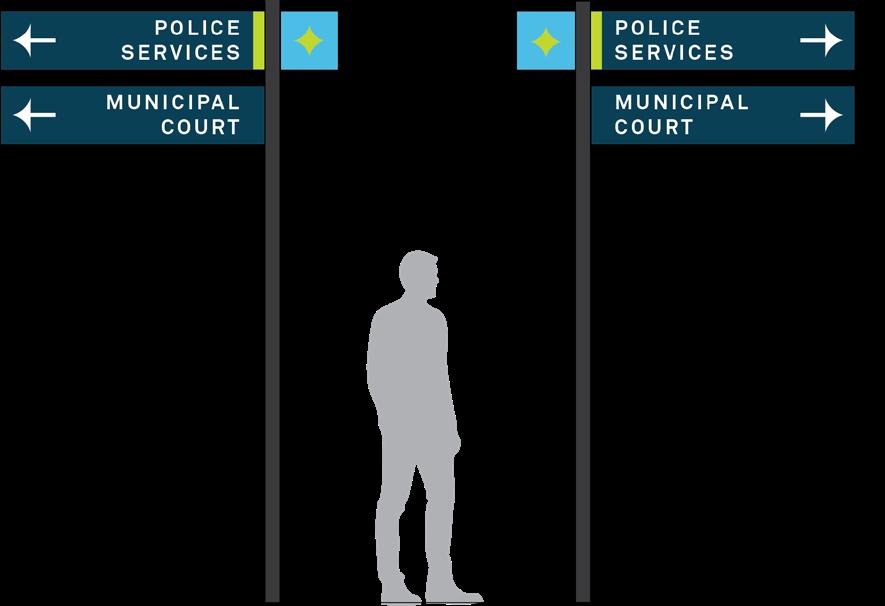

Develop and install artistic gateways and wayfinding signage throughout downtown to compliment the Downtown Warsaw brand, incorporating fun designs and vibrant colors. Gateways create a sense of arrival and along with branded wayfinding enhance both vehicular and pedestrian navigation, promoting destinations and reinforcing a cohesive, inviting downtown brand identity.
Helps visitors navigate between key cultural landmarks, shops, and restaurants. Creates a branded system that helps promote all the creative businesses within the district. Directly enhances walkability by making the district easily navigable for pedestrians.
Price Estimate
Locations
$100,000 - $300,000
Throughout Downtown core, focus on Market, Center, Buffalo, and Lake Streets� Ideally located by significant buildings and public spaces�
THE FOLLOWING SECTION DETAILS THE INCREMENTAL PROJECTS, SMALLER-SCALE, ADAPTABLE INTERVENTIONS DESIGNED TO BUILD MOMENTUM FOR THE CULTURAL DISTRICT. THESE ARE FOUNDATIONAL, HIGH-VISIBILITY ENDEAVORS THAT WILL CREATE IMMEDIATE AND TANGIBLE CHANGE THROUGHOUT DOWNTOWN WARSAW. BY ACTIVATING UNDERUTILIZED SPACES, ENHANCING KEY CORRIDORS, AND IMPROVING THE EVERYDAY PEDESTRIAN EXPERIENCE, THESE PROJECTS WILL SERVE AS THE PRIMARY DRIVERS FOR A MORE VIBRANT, CREATIVE, AND ATTRACTIVE COMMUNITY.





Work with developers to incorporate visual art, sculptures and other art activities into their project or provide funding for off-site projects in downtown.

Enhances the public realm by integrating art into new construction and the physical environment. Cultivates a thriving creative economy by integrating art funding directly into privatesector growth
Visually unifies the downtown district by ensuring new developments contribute to the creative brand.
Price Estimate $ generated by development
Locations New private development sites



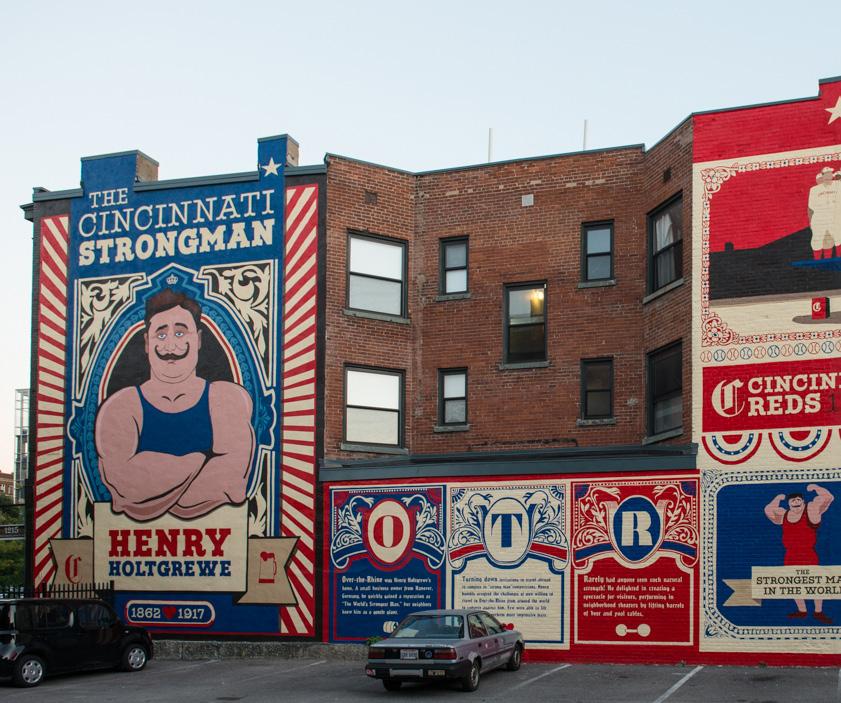
Implement a semi-permanent/rotating mural program strategically placed along key downtown corridors such as Buffalo Street, Center Street, Winona Avenue, and Main Street. These murals would reflect local culture or history, visually enhance the urban landscape, create post card photo opportunities and create gateway art impacts.
Creates multiple large-scale, high-impact visual landmarks throughout downtown. Provides highly visible, accessible opportunities for artists to showcase their work to the public. Directly beautifies and visually unifies the downtown district’s key corridors.
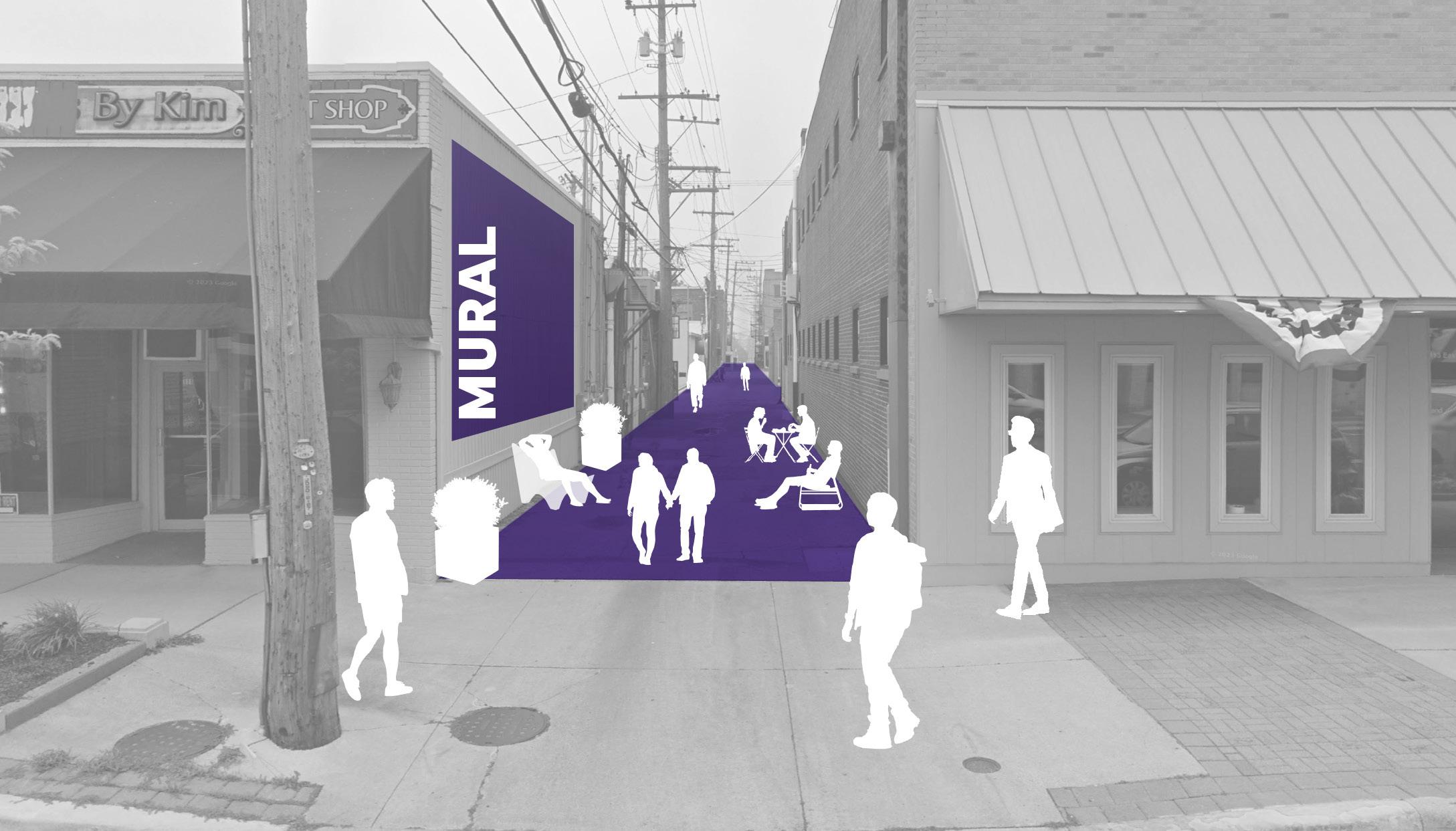



Initiate an activation program for select downtown alleyways, to include incorporating murals, lighting installations, and other art elements to transform underutilized spaces into vibrant pedestrian pathways. Allies that connect Lake City Bank buildings could be transformed into a history walk about this important corporate anchor.
Creates unique, “discoverable” points of interest and photo opportunities that are memorable for visitors.
Provides paid commission opportunities for muralists and lighting designers. Enhances walkability by creating new, creative pathways that connect streets and buildings.


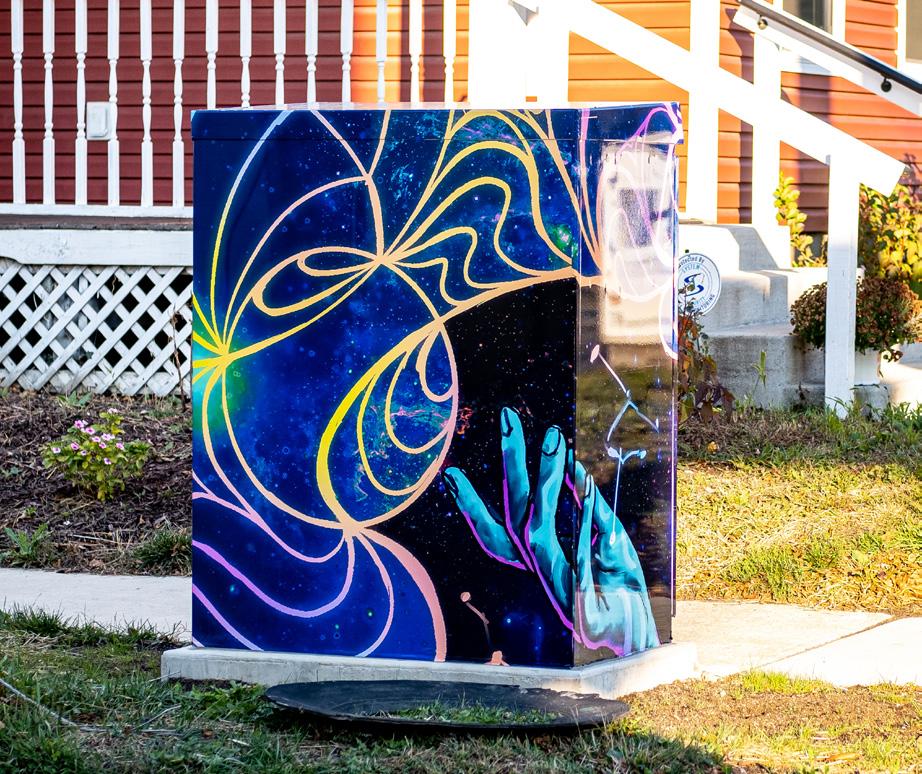
Implement artistic vinyl wraps that can be changed out on utility boxes and other street furniture in targeted downtown areas to enliven the sidewalks and provide artist ongoing commission opportunities. Boxes located at gateways could incorporate a new downtown brand. With each rotation new art themes could represented.
Creates unique, “discoverable” points of interest and photo opportunities that are memorable for visitors.
Provides paid commission opportunities for muralists and lighting designers. Enhances walkability by creating new, creative pathways that connect streets and buildings.
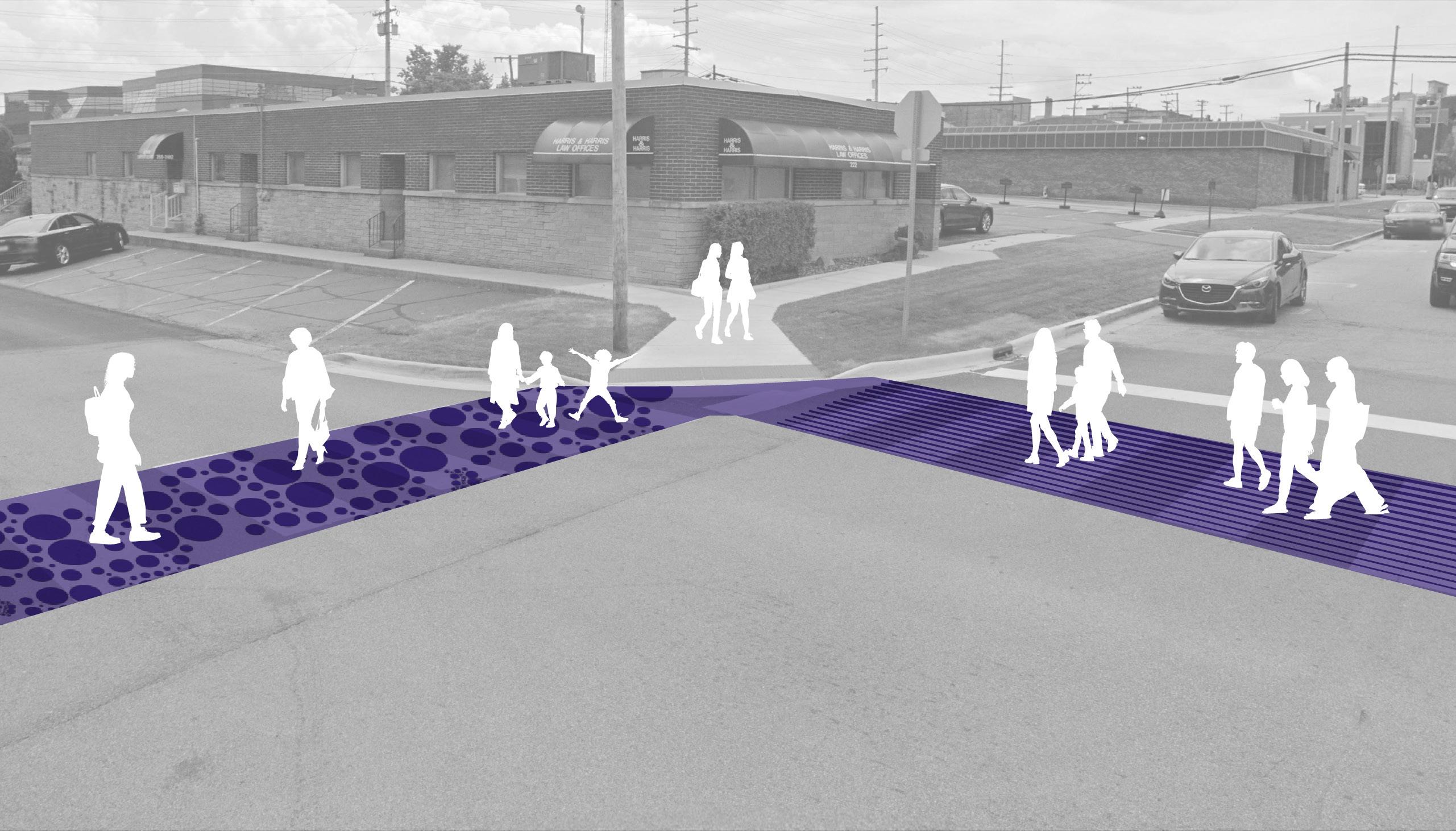


Visually activate key downtown intersections with creatively painted crosswalks or decorative bump-outs. These artistic crosswalks would enhance pedestrian safety by slowing traffic, create a sense of arrival and add distinctive visual flair at intersections that create gateways to the core of the district and welcome visitors.
Contributes to the district’s comprehensive brand and identity as a creative place. Integrates art into public infrastructure, normalizing creative work as part of everyday civic life. Directly enhances walkability and the pedestrian experience with creative, safety-oriented interventions.
Locations Main St, Market St, Buffalo St


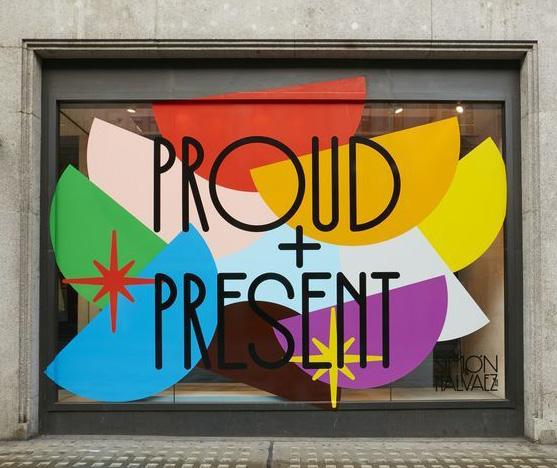

Implement a program for installing artistic vinyl prints on vacant storefront windows� These high-quality, themed wraps would be rotated periodically, transforming inactive spaces into engaging visual displays�
Contributes to an improved, vibrant streetlevel appearance, reinforcing the district’s creative brand.
Creates a “popup” gallery feel that supports a dynamic creative scene and masks vacancies.
Price Estimate $1,000 - $5,000
Visually unifies the streetscape by ensuring there are no “dead spots” in the pedestrian experience.
Locations Center St, Market St, Buffalo St

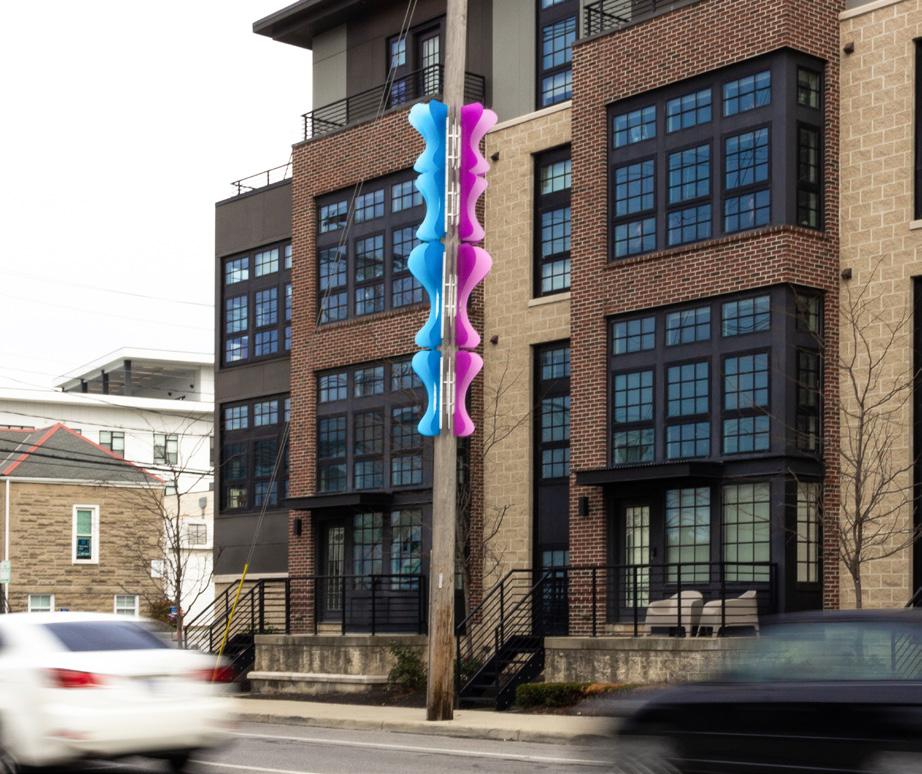
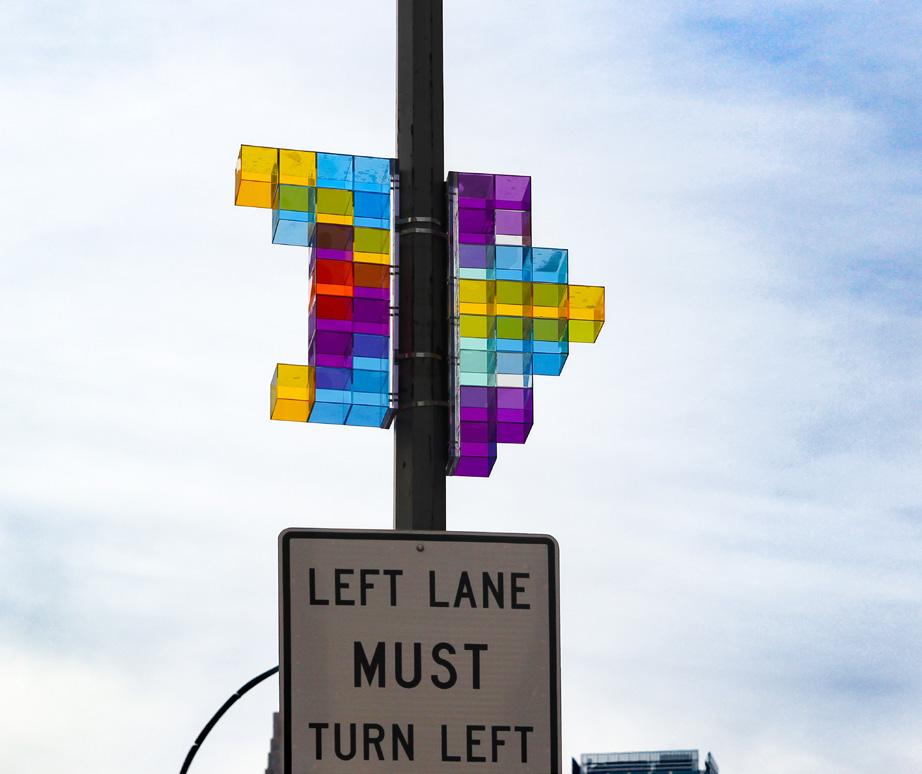
Contributes to the “art trail” concept by activating vertical space in the streetscape. Establishes an ongoing, rotating program for artists to display work in the public realm. Enhances the pedestrian experience by adding creative interventions at eye-level and above.
Integrate unique art pieces onto existing light poles throughout the downtown area. These installations would add unexpected visual interest and contribute to the vibrant atmosphere. Also consider installing season décor in downtown on light poles and other permanent fixtures. Price Estimate

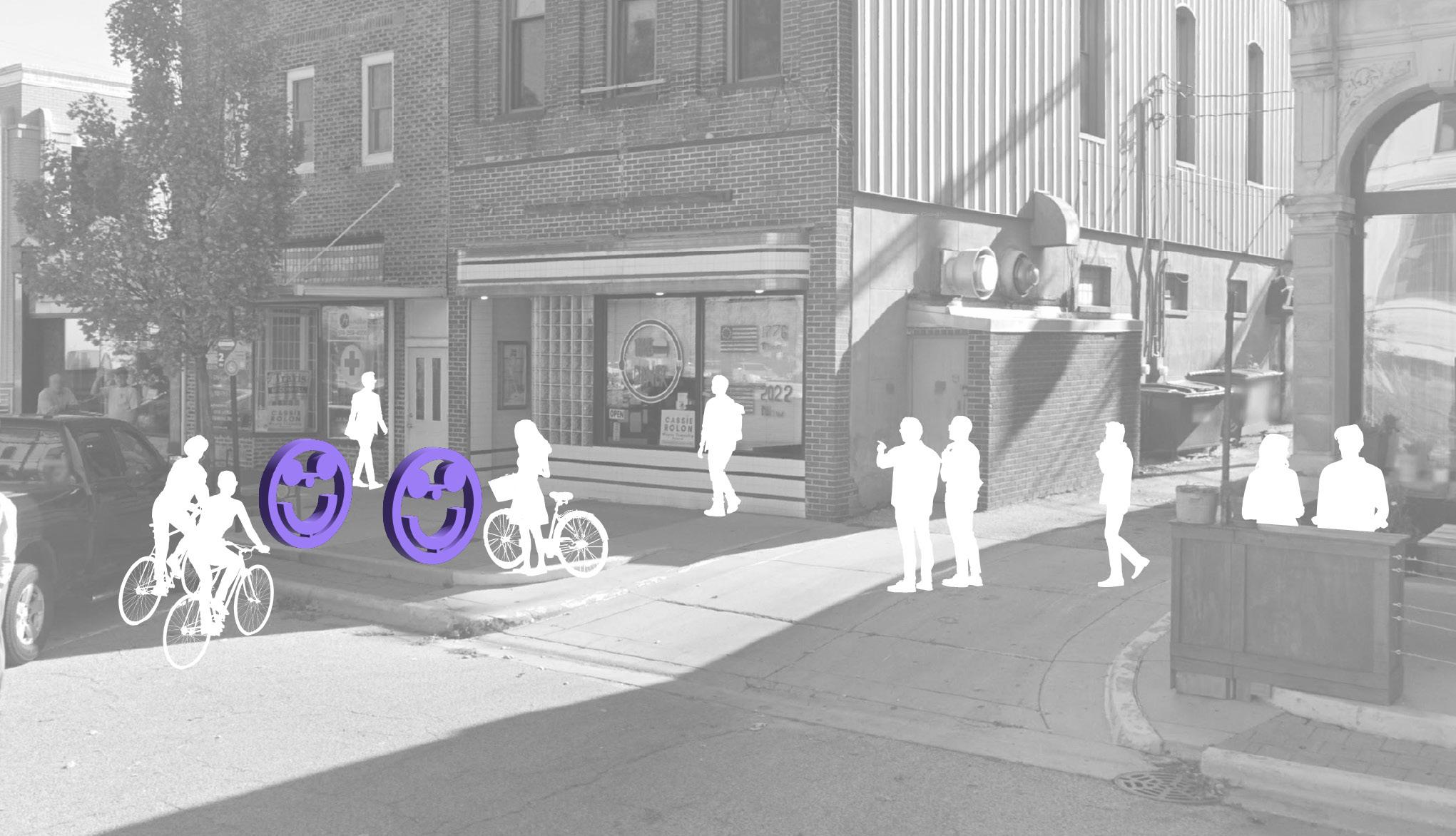
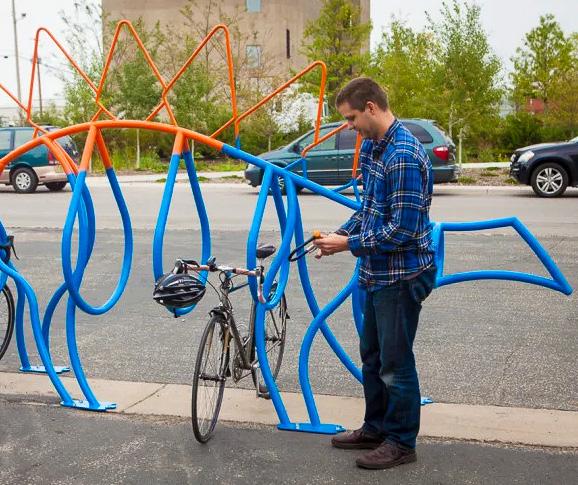

Install artist-designed or artistically painted bike racks in strategic locations within and around downtown and integrate into the Buffalo Trot art trail, Center Street Cultural Corridor and Market Street Multimodal Trail. These functional art pieces would encourage cycling while enhancing the visual appeal of public spaces. Price
Creates functional art pieces that serve as small, unique points of interest for visitors. Provides paid commission opportunities for local artists, fabricators, and designers. Enhances the walkability and bike-ability of downtown through creative, functional interventions.
$10,000 - $20,000 Locations Throughout Downtown, close to highly trafficked buildings/areas
THE FOLLOWING SECTION DETAILS THE AMPLIFY PROJECTS, STRATEGIC INITIATIVES DESIGNED TO ENHANCE AND LEVERAGE EXISTING COMMUNITY ASSETS AND EVENTS. THESE ARE HIGH-IMPACT, COLLABORATIVE ENDEAVORS THAT WILL EXPAND THE REACH AND SUCCESS OF WARSAW’S CURRENT CULTURAL PROGRAMMING. BY FORGING NEW PARTNERSHIPS AND INTEGRATING CREATIVE ACTIVITIES INTO ESTABLISHED COMMUNITY RHYTHMS, THESE PROJECTS WILL SERVE AS THE PRIMARY CATALYSTS FOR A MORE DYNAMIC, COHESIVE, AND ENGAGING COMMUNITY.




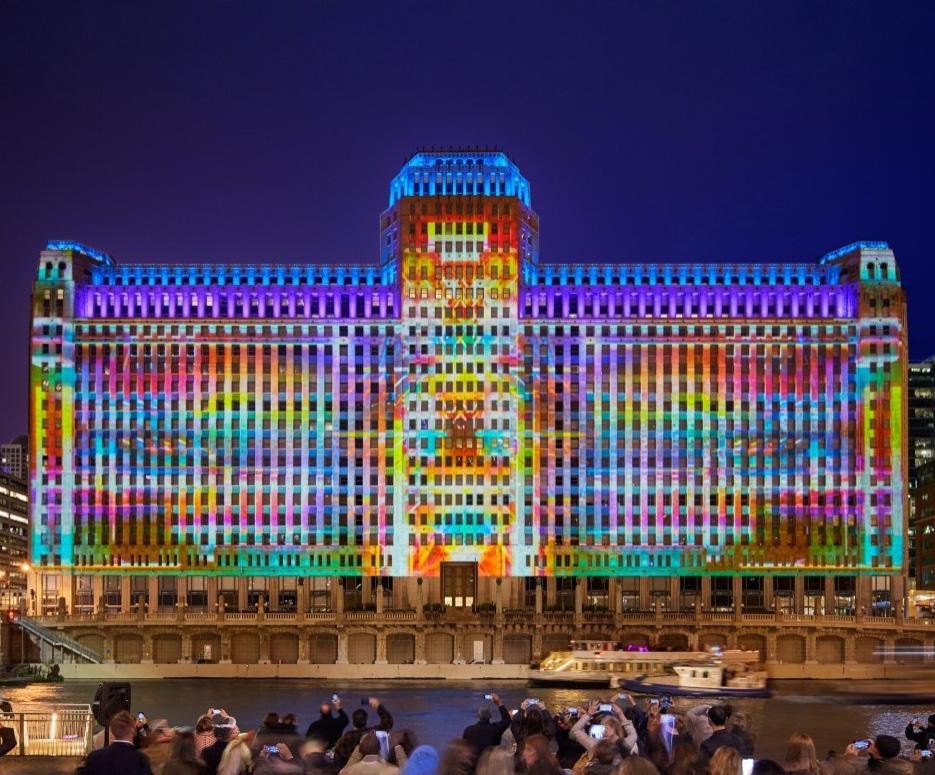
Implement temporary light projections and installations onto significant historic buildings and existing murals downtown. These displays could be programmed to coincide with existing events or seasonal themes. In addition, encourage building owners to install permanent LED programmable or traditional architectural lighting to highlight their buildings and the City to install seasonal lighting to make lighting a hallmark experience.
Highlights the district’s historic architecture in a modern, innovative way.
Creates a new, modern medium for artistic expression and collaboration in the public realm. Creates a unique and magical nighttime atmosphere, extending downtown’s hours of activity.
Price Estimate $50,000 - $100,000
Locations

Architecturally significant buildings

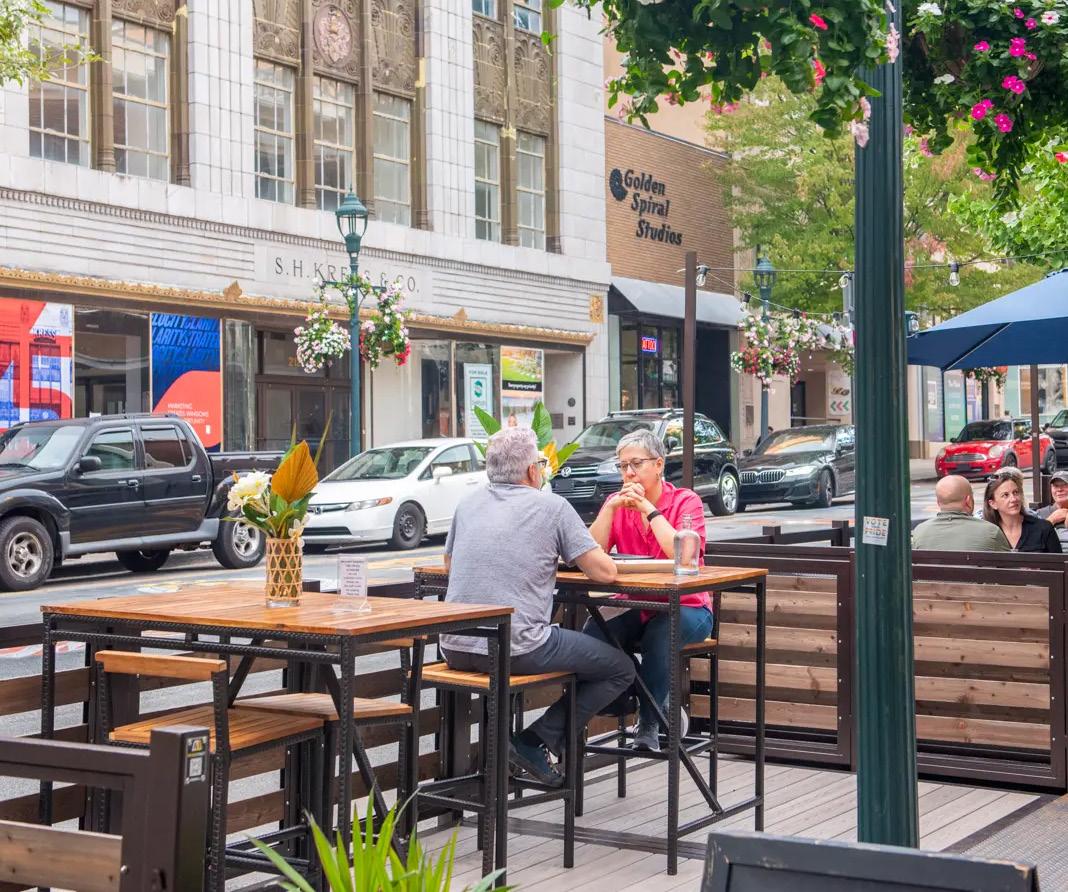
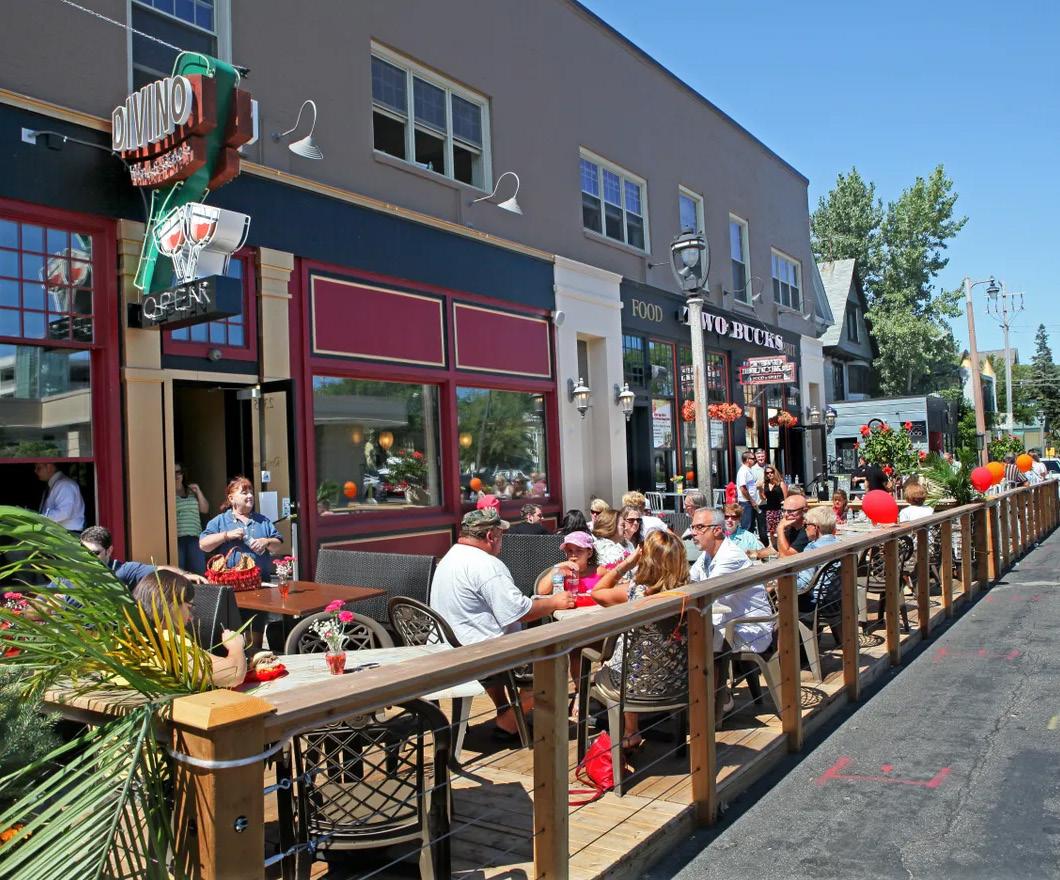
Overcome limited sidewalk space by harvesting 1-2 parking spaces for restaurants to create sidewalk café parklets which will help grow culinary anchor sales, attract more customers and enhance placemaking and social interaction. Develop grant program to support creation of parklets. (Note: new parking garage and City parking enforcement will free up onstreet parking will limit impact of reduced parking spaces.)
Contributes to the district’s overall brand as a “Food, Art, and Culture Hub”.
Provides accessible opportunities for regional artists to exhibit and sell large-scale, professional work.
Creates new, tangible assets for small businesses that attract more customers.
Downtown restaurants, with a focus on Market, Center, and Buffalo Streets�



Curate a program for the temporary installation and rotation of small-scale sculptures along downtown along Buffalo Trot art trail, Venter Street Cultural Corridor and Market Street Multimodal Trail and other downtown locations. These pieces could be coordinated with ongoing cultural events.
Creates an ever-changing “outdoor gallery” that encourages repeat visitation from residents and tourists. Provides accessible opportunities for regional artists to exhibit and sell large-scale, professional work.
Enhances the pedestrian experience by adding surprising and inspiring moments of art to the streetscape.




Introduce uniquely designed and artistically crafted benches and other seating elements in public areas, particularly around Center Lake, Buffalo Trot and sculpture play park. These creative seating options would enhance comfort and visual appeal in high-traffic pedestrian zones.
Contributes to the “art trail” concept, adding permanent points of interest for pedestrians.
Integrates art into functional public furniture, normalizing creative work.
Enhances the pedestrian experience by providing creative, comfortable, and inviting places for rest.
Price Estimate $5,000 - $10,000 Locations Buffalo Street & Center Lake
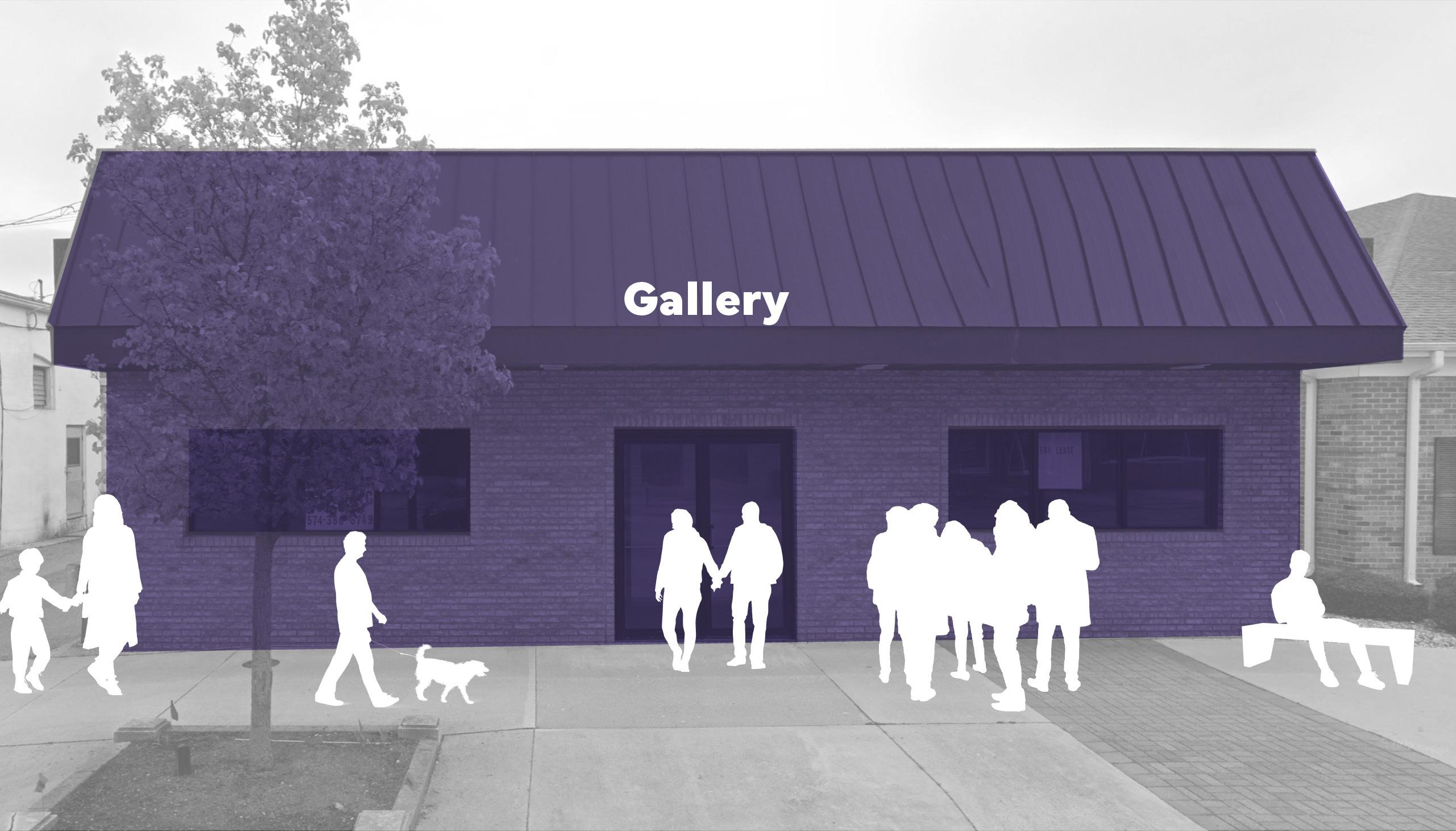

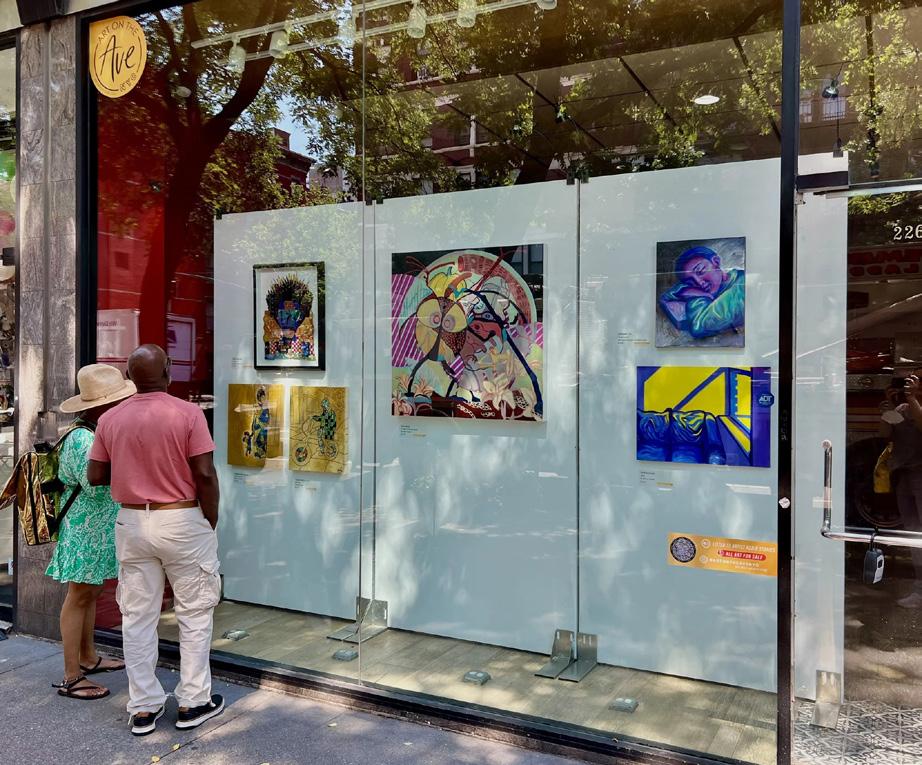
Establish a network of temporary popup galleries within vacant storefronts along targeted downtown corridors. These spaces would showcase rotating exhibitions by local and regional artists, providing accessible art experiences.
Helps establish downtown as a dense, active hub for visual arts activity. Serves as a creative business incubator for artists or gallerists to test their concepts. Creates a dynamic and ever-changing “art walk” experience for pedestrians.
$10,000


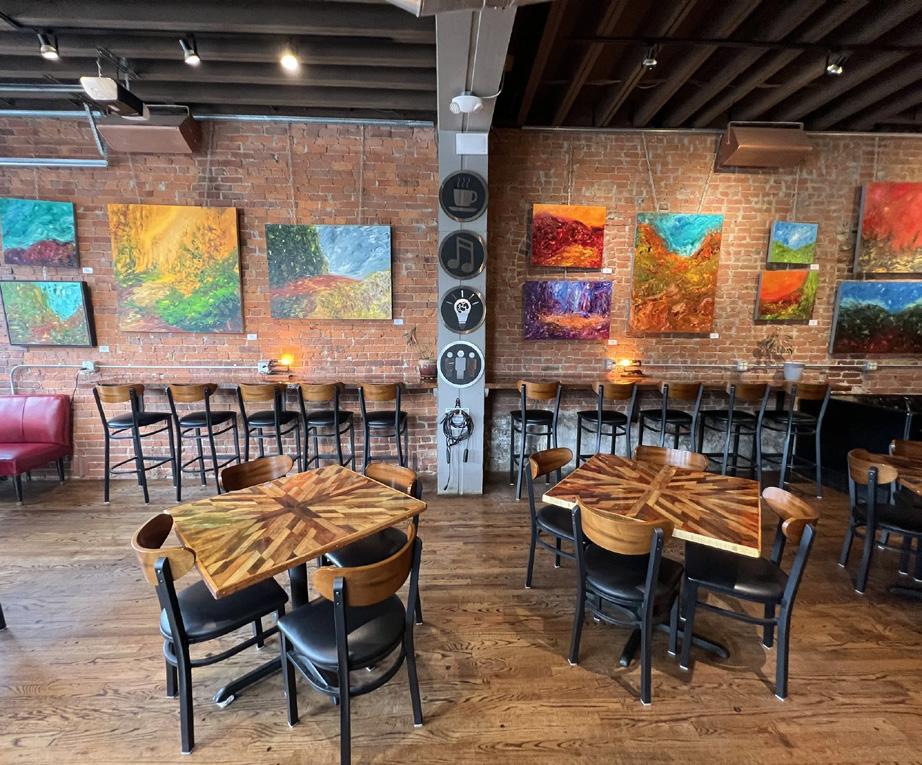

Integrate local artists into regularly scheduled events by showcasing their artwork within participating coffee shops.
Strengthens existing downtown events, making them more unique and attractive to a regional audience.
Cultivates a direct-toconsumer market for local makers and strengthens the small business ecosystem.
Price Estimate $1,000 - $2,000
Creates a more dynamic and multi-faceted downtown event experience.
Locations Coffee shops throughout Downtown Warsaw

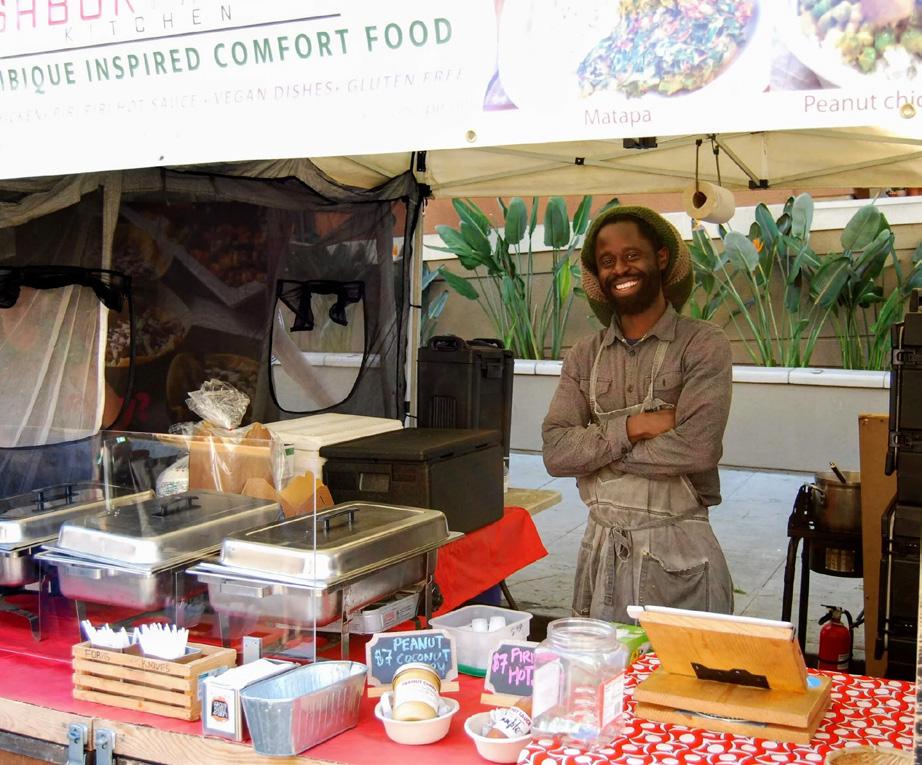

Integrate a “Flavor Showcase” into the existing Monthly Sip N Shop event, featuring local food vendors specializing in a specific cuisine or culinary theme each month.
Strengthens the district’s brand as a “Food, Art, and Culture Hub”.
Provides accessible, low-cost opportunities for culinary entrepreneurs to test concepts and sell products.
Price Estimate $1,000 - $10,000
Locations Buffalo St

Activates the public realm and encourages visitors to linger and explore multiple businesses.



Develop a dedicated arts and culture event at the Warsaw Community Public Library to enhance its role as a community anchor.
Establishes a new, largescale cultural event capable of attracting a regional audience.
Creates new opportunities for authors, speakers, performers, and visual artists to engage with the public.
Creates a new, recurring program that adds significant energy and activity to the downtown calendar.


To unlock the full potential of the Warsaw Cultural Arts District, we must cultivate a thriving creative ecosystem where artists, organizations, and residents can connect and grow. This section outlines the strategies designed to build that vibrant human network. By focusing on three core pillars—supporting local artists, fostering dynamic collaborations, and engaging the entire community—we will create a district that is more than just a destination. The initiatives that follow will generate a cycle of creativity and participation, ensuring the downtown cultural district is authentic, economically impactful, and a source of community pride for years to come.


The plan moves beyond one-off projects to create a stable framework where local and regional artists can build sustainable careers, gain exposure, and develop their skills.
• Creating Consistent, Paid Opportunities: The plan establishes ongoing programs that provide a reliable source of income and visibility. The Rotating Public Sculptures program, along with commissions for Artist-Designed Benches and Designer Bike Racks, creates a recurring pipeline of projects, ensuring opportunities are refreshed regularly and allowing a diverse range of sculptors and craftspeople to participate over time. Similarly, the Corridor Mural Program establishes a pipeline of high-profile projects for muralists.
• Providing Accessible Venues for Exhibition and Sales: The plan lowers the barrier to entry for artists to show and sell their work. The Pop-Up Gallery Network activates vacant storefronts, giving artists a low-cost, low-risk way to mount exhibitions and engage directly with the public. Furthermore, the Artisan Market at Monthly Events integrates local makers into existing, popular events, providing a built-in audience and connecting artists directly with consumers.
• Fostering a Hub for Creation and Learning: The plan recognizes the need for physical space where artists can work and connect. The transformative project, “The First Artspace,” which proposes converting the Former First Christian Church, is a cornerstone strategy. By providing affordable artist studios and classrooms, it becomes an incubator for local talent where professional artists can create, teach, and mentor the next generation.`
• Developing Artist Housing and Residency Programs: The plan recognizes a key opportunity in renovating the many vacant or underutilized upper-level spaces in downtown buildings. By transforming these spaces into affordable live/work studios, Warsaw can create a formal artist housing program. This strategy not only helps retain local artists by providing affordable space but also establishes a foundation for an Artist-in-Residency program, attracting new creative talent to live and work in the cultural district.
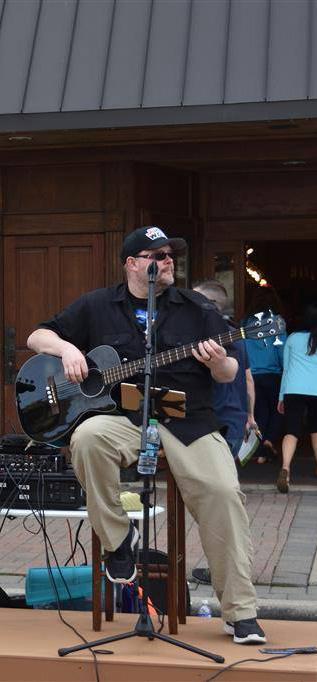
The plan aims to help foster and create a collaborative network where the arts are integrated into the civic and commercial fabric of Warsaw.
• Forging Public-Private Partnerships: The strategies actively encourage partnerships that benefit both artists and the business community. The Alleyway Arts & Activation project is a prime opportunity for collaboration between the City, artists, and adjacent property owners like Lake City Bank, who have expressed support for an alley activation. This turns a shared space into a shared investment and point of pride.
• Integrating Arts into Civic Life: The plan positions arts and culture as essential to the community’s identity. The Library Literary & Arts Festival creates a powerful partnership between the Warsaw Community Public Library and the arts community, leveraging the library’s role as a trusted public institution to host a major cultural event.
• Connecting Creative Disciplines: The Jailyard Performance Space, located next to the Kosciusko County Historical Society, is perfectly positioned for collaborative programming that could blend live music with historical storytelling. Initiatives like the “Flavor Showcase” connect the local restaurant scene to the arts district, recognizing chefs as vital members of the creative community.
• Partnering with a Storied Cultural Anchor: The Wagon Wheel Center for the Arts, a community cornerstone since 1956, is a vital strategic partner for the Cultural Arts District. The Hunden Partners study noted that because of its current location, many patrons travel directly to and from performances, limiting the economic benefit to downtown’s core restaurants and shops. A key goal of the Cultural Arts District is to bridge this gap by creating stronger connections between the theatre’s audience and downtown businesses. By aligning marketing efforts and developing new programming like pre-show dining packages or post-show events, this partnership can immediately begin to capture more visitor spending and lay the foundation for development of the Center Street Cultural Corridor.


A core principle of the plan is to move art from a passive viewing experience to an active, participatory part of daily life.
• Creating Dynamic Public Events and Festivals: The community survey revealed a strong demand for more shared experiences. The Jailyard Performance Space and City Square create dedicated outdoor venues for live performances, directly answering the call for more live music—the top requested activity in the survey. The Buffalo Festival Street concept creates a pedestrian focused zone specifically for the large-scale festivals and arts and crafts fairs residents desire.
• Making Art Interactive and Accessible: The plan focuses on embedding art throughout the city in ways that invite interaction and discovery. The Gateway Sculpture Play Park merges art with recreation, creating a landmark destination where families can physically engage with creative structures. The Alleyway Arts & Activation strategy transforms overlooked spaces into vibrant pedestrian galleries, inviting residents to explore their downtown in new ways and making art an everyday experience.
• Establishing a Hub for Creative Learning and Skill-Sharing: Community feedback shows a significant interest in hands-on creative learning, with cooking, fine art, and photography classes being highly requested. The adaptive reuse of the former First Christian Church into “The First Artspace” directly addresses this by creating dedicated classroom space. This venue will serve as a central hub where local artists can teach, mentor, and share their skills, fostering a sustainable creative ecosystem and turning passive interest in the arts into active participation.
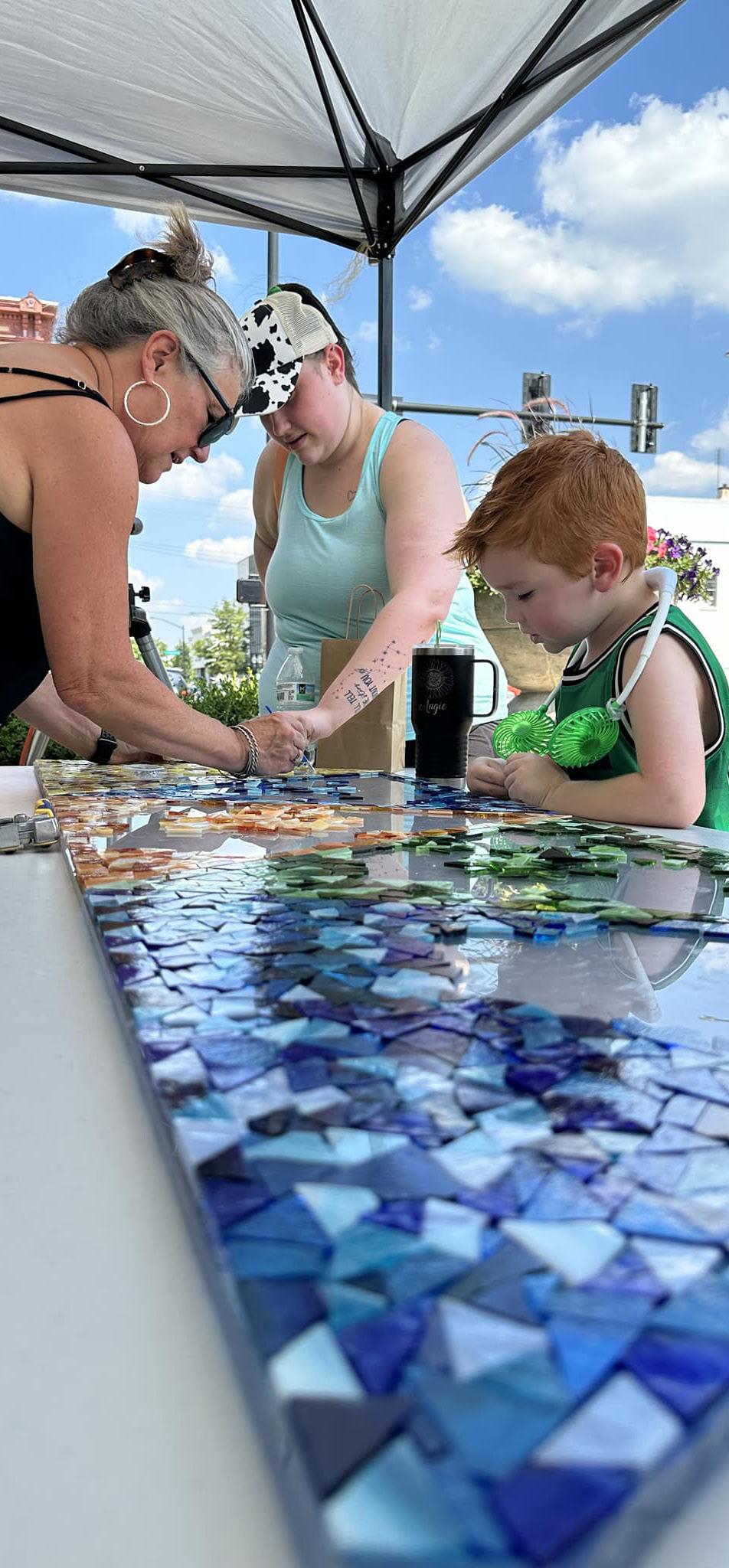
This section explores the crucial relationship between a vibrant arts scene and the physical and social fabric of the community. By strategically integrating arts and culture into downtown, this plan will not only enhance the city’s appearance but also strengthen its identity and make it a more attractive place for a skilled workforce to live and work.
Public art will improve the aesthetic quality and feel of downtown Warsaw by transforming public spaces and integrating creativity into the urban environment.
• Example 1: Corridor Mural Program. This initiative will directly beautify large, blank building facades along key downtown corridors. By turning these underutilized walls into vibrant canvases, the program will add color, visual interest, and a dynamic artistic layer to the city’s architecture.
• Example 2: Alleyway Arts & Activation. This project will take often-overlooked utilitarian spaces and turn them into destinations. By incorporating murals, creative lighting, and other art elements, these alleys will become safe, inviting, and engaging pedestrian pathways that enhance the overall feel of downtown.
Placemaking will reinforce Warsaw’s unique identity and history, contributing to a more vibrant and livable community that feels authentic and memorable.
• Example 1: The First Artspace. By adaptively reusing the historic Former First Christian Church, this project honors Warsaw’s architectural heritage while creating a new cultural hub. This reinforces the city’s identity by demonstrating a commitment to preserving its history while investing in its creative future.
• Example 2: Gateway Sculpture Play Park. This project will create a unique and memorable entry point to downtown. An interactive, artistic playscape at a key gateway immediately establishes a distinct, family friendly, and creative identity for Warsaw, making a powerful first impression on visitors and residents.

A thriving arts and culture scene is a critical quality of life asset that makes Warsaw a more attractive place for a skilled workforce to live and work.
• Example 1: Buffalo Festival Street & Jailyard Performance Space. These projects create the “third places” that are essential for community life. A downtown with a regular calendar of live music, festivals, and public gatherings is more socially vibrant and “sticky.” For the skilled professionals in Warsaw’s key industries, these amenities are a major factor in their decision to build a life in the community, not just a career.
• Example 2: Pop-Up Gallery Network & Artisan Markets. These initiatives signal that Warsaw is a community that values and supports creativity. For professionals and their families considering relocation, a city that visibly supports its artists and makers is often seen as more progressive, open, and interesting, making it a more desirable place to live.
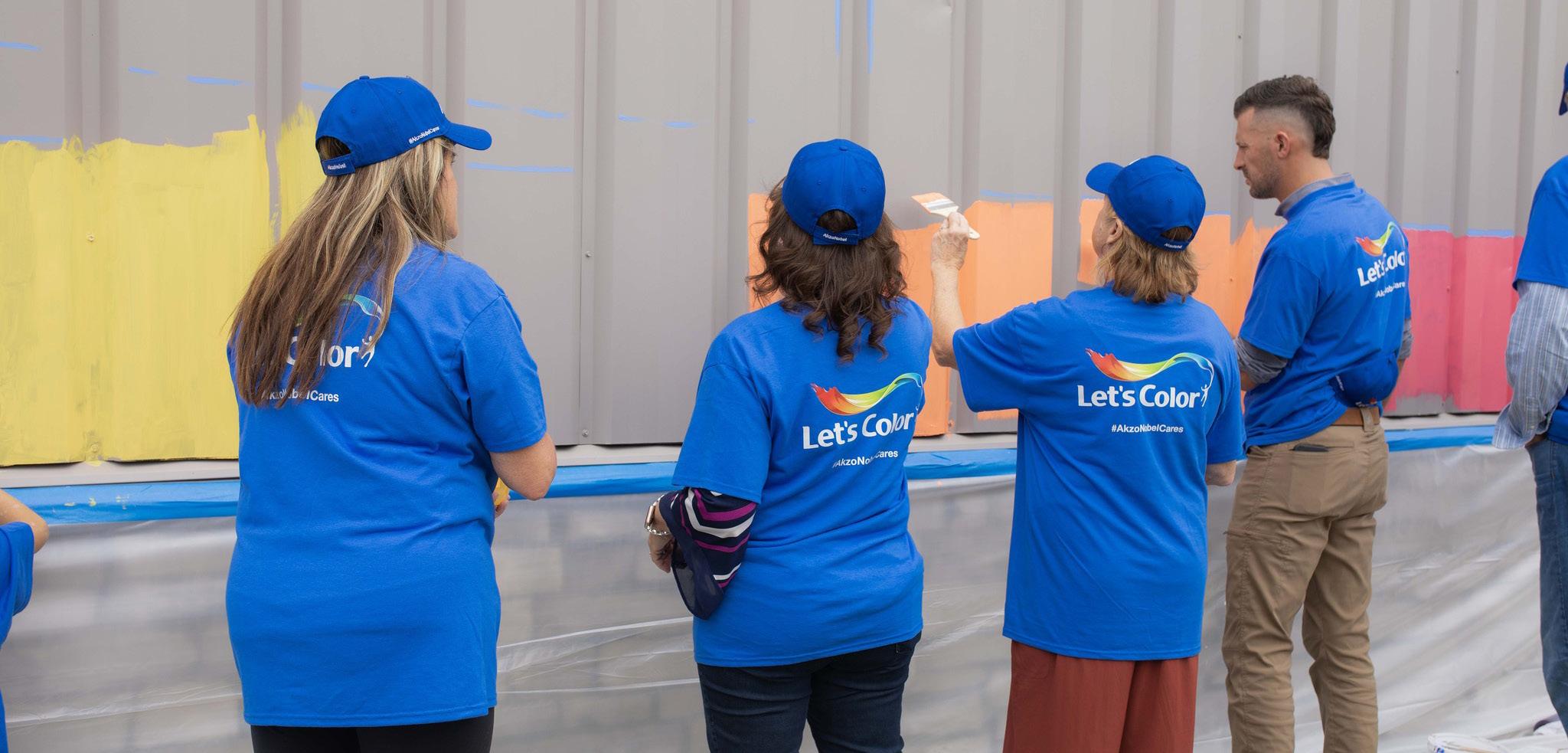
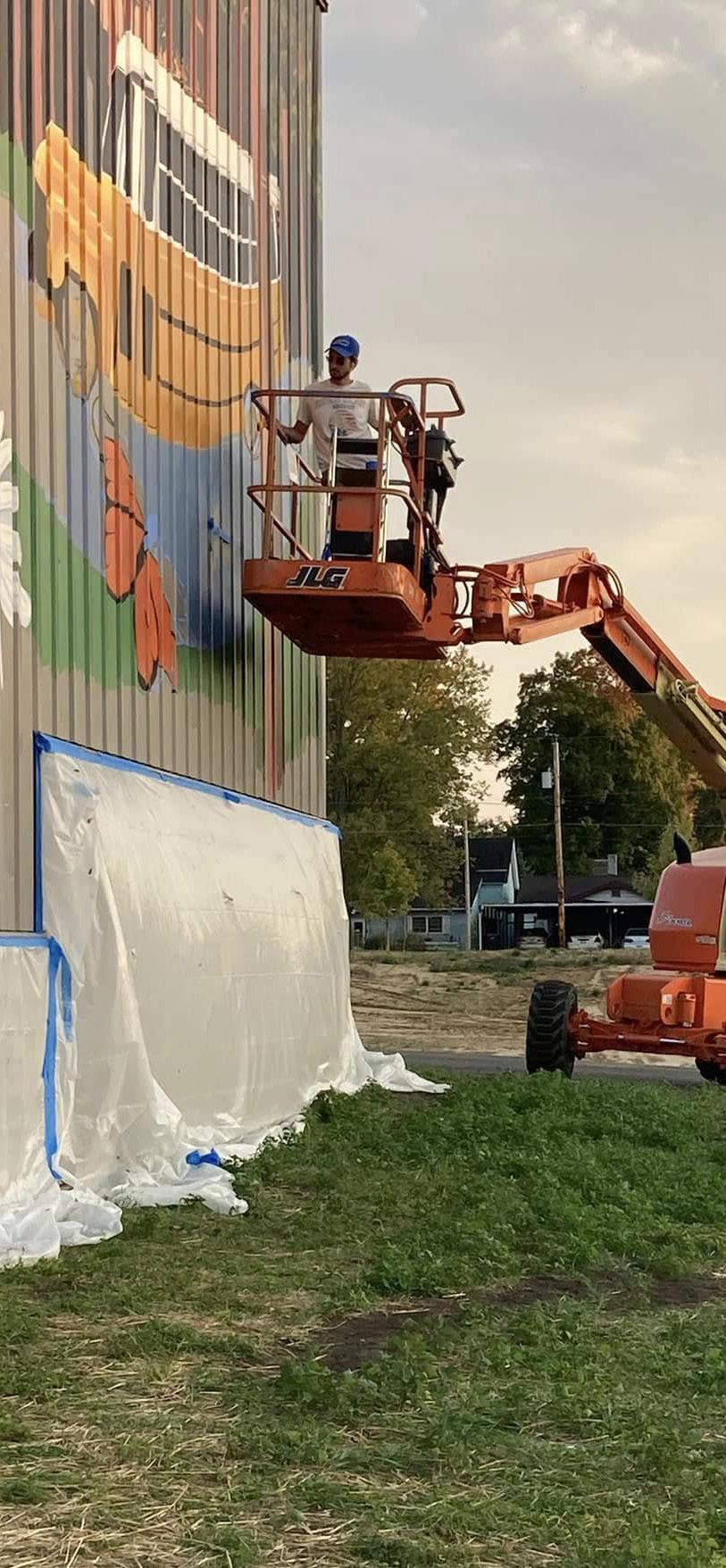
Successfully transforming downtown Warsaw into a vibrant cultural district requires a clear and strategic path forward. This plan provides more than a list of ideas; it offers a cohesive strategy where every action is intentional. To guide this effort, each proposed project has been aligned with a primary placemaking goal, which serves as the strategic ‘why’ behind its selection. This goal-oriented framework ensures that all efforts are purposeful and directly contribute to creating a more dynamic and engaging downtown.
To assist in this process, the projects have been assembled into a comprehensive Project Action Table designed to guide Main Street Warsaw and its partners. This table serves as a practical roadmap, outlining each project, its primary goal, and a list of potential partners crucial for successful execution. By using this table as a central organizing tool, stakeholders can coordinate efforts, build strong collaborations, and strategically implement the projects needed to build a robust and authentic Warsaw Cultural Arts District.

The successful implementation of the Warsaw Cultural Arts District plan cannot be achieved by Main Street Warsaw or any single organization. Its strength and sustainability will come from a collaborative network of community partners. Leveraging the unique missions, expertise, resources and audiences of existing organizations is the most effective way to implement the projects outlined in this plan.
Key potential partners for implementation include:
• City of Warsaw
• Community Arts Program of Kosciusko County
• Everybody’s Tiffany Improv
• Grace College
• Kosciusko Chamber
• Kosciusko County
• Kosciusko County Convention and Visitors Bureau
• Kosciusko County Community Foundation
• Kosciusko Economic Development Corporation (KEDCO)
• Lake Area Community Ban
• Lakeland Art Association
• Makers Space at the Gathering Place
• Wagon Wheel Center for the Arts
• Warsaw Community High School
• Warsaw Public Art Commission
• Warsaw Redevelopment Commission

A strategic public art program is essential for enhancing Warsaw’s physical landscape, creating a distinct sense of place, and attracting talent. These benefits depend on a sustainable financial plan, as reliable funding is the cornerstone of any successful program.
To ensure the Cultural Arts District’s longterm vibrancy, a diverse funding model is critical. Relying on a single source, like the annual city budget, leaves the program vulnerable to economic shifts. Cultivating multiple streams such as public-private partnerships, development fees, grants, and donations help build a robust foundation.
This section provides a “menu” of proven funding mechanisms. It is a toolkit of options, not a prescription. This approach allows Warsaw to select and combine the most appropriate methods to to invest in and maintain cultural and hospitality assets and venues including operations and ensure stability for commissioning, acquiring, and maintaining high-quality art.
This is one of the most common and effective tools for building a municipal art collection. This policy dedicates a small percentage (typically 0.5% to 2%) of the total budget for publicly funded Capital Improvement Projects (CIP) to be used for public art. When Warsaw builds or undertakes a major renovation of a public building, park, or infrastructure project, a set percentage of that project’s construction cost is automatically allocated to a public art fund.
Key Benefit: This method integrates art directly into public development and guarantees a consistent funding stream tied to the city’s growth, rather than competing with other departments for annual budget allocations.
This mechanism extends the “Percent for Art” concept to private-sector projects, ensuring that as the city’s private landscape develops, so does its public art collection. This policy, often part of the zoning or planning approval process, requires private non-residential or large-scale residential projects to contribute to public art. Developers are typically given flexible options, such as commissioning a work of art on their own property, contributing a fee into the city’s public art fund, or receiving incentives like a floor-area ratio bonus in exchange for including art.
Indiana Case Study: The city of Madison, Indiana, identifies “Percent for Art” and “trading art for development square footage” as potential “Private Development Mechanisms” in its public art guidelines.
This mechanism leverages a powerful economic development tool to directly fund cultural placemaking. In a Tax Increment Financing (TIF) district, the “base” property tax value is frozen. As development occurs and property values rise, the new tax revenue generated above that base (the “increment”) is captured. An allocation policy adopted by the Redevelopment Commission would dedicate a small portion of this new revenue stream specifically to the cultural arts district fund.
Indiana Case Study: In Fort Wayne, Indiana, the Redevelopment Commission uses TIF as a tool to promote private investment in its redevelopment districts. As property values increase, the captured tax increment is used to fund public infrastructure improvements. This includes “streetscaping,” “parking,” and “green space,” which are all key components of a cultural district and can be leveraged to fund integrated public art.

A proactive grant-seeking strategy is essential for funding specific projects and leveraging local dollars. This involves actively pursuing competitive grants from government, private, and corporate foundations.
State-Level Example: The Indiana Arts Commission’s (IAC) Arts Project Support grant is a key opportunity. It offers matching funds of up to $5,000 to support a specific arts activity, such as a festival, exhibition, or public art installation. This grant requires a 1:1 match, which can be met with cash or in-kind contributions. This state-level support is designed to be accessible, as eligible applicants include both 501(c)(3) nonprofits and units of government.
This strategy focuses on building direct partnerships with the community and local businesses who wish to invest in the city’s cultural landscape. A public art fund, potentially managed by a 501(c)(3) partner, can accept tax-deductible donations from individuals. Local corporations can also provide support through sponsorships of specific artworks or installations. This model can also include valuable in-kind support, such as donated materials or services from local businesses to help complete a project.
As mentioned previously the Indiana Economic Development Corporation has allocated $45 million to Northeast Indiana Regional Development Authority (RDA) with goals that include accelerating the region’s trajectory as an innovative, vibrant and winning region by growing community connectivity and cultural vibrancy. This is supplemented by Lilly Endowment’s state-wide $65 million in READI 2.0 grant funding which seeks to enhance quality of life, rehabilitate deteriorated or abandoned properties and build vibrant communities. In addition, Orthoworx received $30 million from the State of Indiana for talent retention and attraction. Some of the projects presented in the cultural arts district plan may be eligible to receive funding from the Orthopedic Industry Retention Initiative (OIRI). Main Street Warsaw should use this plan to make applications for funding from these sources in Q1 2026.

This strategy involves leveraging the County Innkeeper’s Tax (CIT), a tax collected on lodging and hotel stays, to create a dedicated funding stream for the cultural district’s infrastructure and operations. Potential strategies to support cultural facility maintenance or operations and hospitality assets include increasing the existing County Innkeeper’s Tax or allocating a dedicated portion of current CIT revenues for cultural infrastructure.
Indiana Case Study: In Hamilton County, Indiana, as of January 2024, the CIT rate is 8 percent. This revenue is strategically divided, with 5 percent supporting tourism promotion and 3 percent directed to a Tourism Capital Improvement Fund for visitor infrastructure. This model provides a clear precedent for how lodging taxes can be used to directly fund the type of cultural and placemaking projects outlined in this plan.



Center Street Cultural Corridor
Proposed Market St Multi Modal Trail
Alleyway Arts & Activation
Creative Crosswalks
Utility Box Wraps
New Project Art Activation
Corridor Mural Art Projects
Sidewalk Cafe Parklets
Branded Gateways
Architectural Projections/Lighting
Library Literary & Art Festival
Artist Designed Benches

